Like Distant Thunder: Canada’s Bison Conservation Story
Elk Island National Park
- Like Distant Thunder: Canada’s Bison Conservation Story (PDF, 6.7 MB)
Table of contents
- Acknowledgments
- Introduction: Over 100 Years of Bison Conservation
- The Bison’s Prehistoric Family Tree
- Protecting Bison Protects the Great Plains
- Like Distant Thunder: 30 Million Bison
- Bison and the First Peoples of North America
- The Destruction of the Great Bison Herds
- To Banff By Way of Politicians: James McKay, Samuel Bedson, Lord Strathcona, and the Display Herd at Banff (1897 to 1997)
- The Pablo-Allard Herd (1884 to 1906)
- Elk Park Way Station (1907 to 1909)
- Lessons Learned From Buffalo National Park (1909 to 1939)
- Securing the Last of the Northern Bison: The Foundation of Wood Buffalo National Park (1922)
- A Second Chance for Wood Bison: Bison at Elk Island National Park (1965 to Present)
- The Long Road to Health: Maintaining Healthy Herds
- Bison At Risk
- Go Forth and Flourish: Bison Transfers From Elk Island National Park
- Roaming Far: National Parks and Historic Sites and Reintroduced Bison
- Conclusion
- Endnotes

Acknowledgments
Thank you so much to everyone who helped me track down documents and images, provided feedback and suggestions, spotted typos, tweaked my writing style, and gave me and the Elk Island National Park team the support we needed to see this project through to completion. In alphabetical order:
David Britton, Jonathan DeMoor, Tristan Drozdiak, Stephen Flemming, Caroline Hedin, Karsten Heuer, Johane Janelle, Cameron Johnson, Dale Kirkland, Janelle Lane, Harvey Locke, Scott Mair, Marie-Eve Marchand, Alexandra Mosquin, Scott Nesbitt, Wes Olson, Barry Robinson, Pinette Robinson, Lindsay Rodger, Karen Routledge, Todd Shury, Meg Stanley, Scott Stephen, and Fern Yip.
Ce document est disponible en francais
CAT NO. R62-546/2017E-PDF
ISBN 978-0-660-24251-4
© Her Majesty the Queen in Right of Canada, as represented by the Chief Executive Officer of the Parks Canada Agency, 2017

Introduction: Over 100 Years of Bison Conservation
The continued preservation of bison is one of Parks Canada’s greatest success stories. The Canadian parks system has been actively involved in protecting bison for over 100 years. The first display herd of bison was placed in Banff in 1897, the seed herd of plains bison arrived in Elk Island National Park in 1907, and Wood Buffalo National Park was founded in 1922 to protect the last wild, free-ranging herd of wood bison in the world. A number of national parks have been founded to protect bison and many more have since reintroduced bison long after they were extirpated from the region. Through live transfers to establish display herds and other conservation herds, Parks Canada has supported bison across North America for over a century, bringing them back from the brink of extinction.
Like Distant Thunder is a genealogical history of the bison herds of Parks Canada. While much has been written about the history of bison and Indigenous peoples, the destruction of the great bison herds in the nineteenth century, and individual conservation herds, there are few works that speak of the Parks Canada bison conservation herds as a whole. The purpose of this document is to draw together these disparate threads to form a cohesive narrative of the bison herds managed by Canada.
While bison once roamed the continent of North America in the tens of millions, the nineteenth century saw their numbers reduced to less than a thousand individuals scattered in isolated herds. The Canadian government took an active role in purchasing bison from private individuals who were raising them, and founded multiple conservation herds in national parks to protect them. Over the last century, bison have faced many challenges, including limited habitat and the threat of disease. However, for generations, Canadian national parks have played a leading role in bison conservation projects. Bison from Canadian national parks have been used to start or supplement conservation herds all across North America – and beyond.
Top of pageThe Bison’s Prehistoric Family Tree
The bison that live today in North America originally evolved in Eurasia before migrating across to North America via the Bering Land Bridge during one of the past ice ages, 130,000-75,000 years ago. Siberian and North American bison had a common maternal ancestor which lived 160,000 years ago; she would have been a steppe bison (Bison priscus) with a second hump and large, curved horns.Endnote 1 Bison in one form or another have lived on the North American continent for tens of thousands of years. Twelve thousand years ago, Bison latifrons grazed in the central North American grasslands. This gigantic bison was 25% larger than bison today and had horns spanning more than two metres from point to point.Endnote 2 Later, Bison latifrons evolved into Bison antiquus and then Bison occidentalis, the predecessor for all modern North American bison.Endnote 3
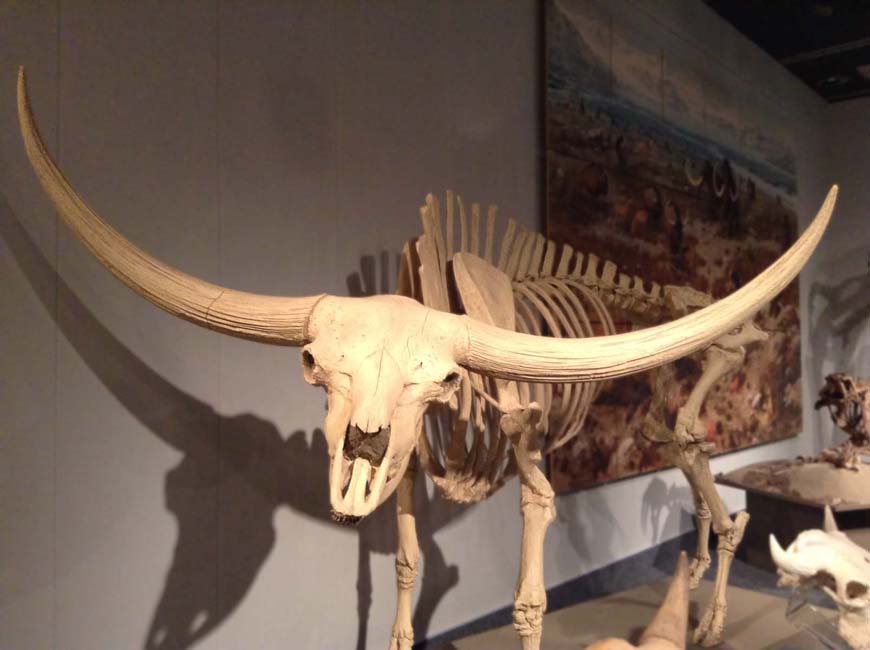
Lauren Markewicz / © Parks Canada
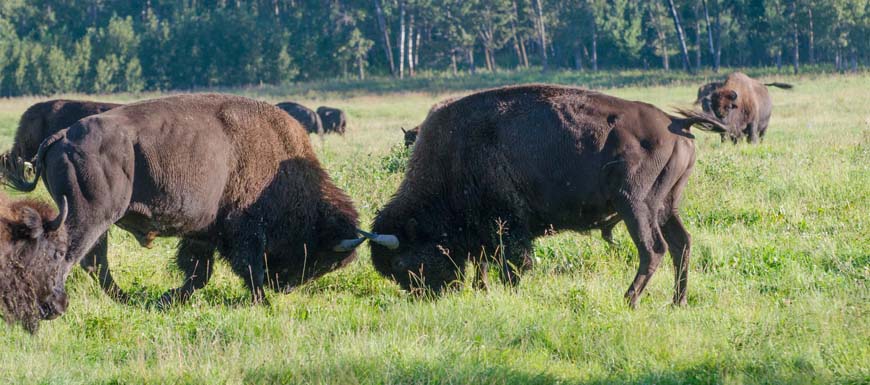
Bison, or Buffalo?
When English speakers first arrived on the prairies, they had no word for this animal. They used an existing word, “buffalo,” from the French "boeuf" (beef). Just over 100 years ago, taxonomists wanted to more clearly distinguish between the buffalo of Africa and Asia and the buffalo of North America, and so recommended using the Latin term “bison.” However, the word “buffalo” continues to hold a lot of cultural significance, particularly for Indigenous people. One can think of “buffalo” as the common name, and “bison” as the scientific common name.
Today, only two subspecies of North American bison persist, and Parks Canada manages herds of both: plains bison (Bison bison bison) and wood bison (Bison bison athabascae).Endnote 4 Researchers believe that wood bison and plains bison diverged approximately 5,000 years ago, so these populations are still closely related.Endnote 5 Wood bison are the largest land mammal in North America, followed closely by their cousins the plains bison. Wood bison once ranged throughout northern Alberta, Alaska, the North-West Territories, and Yukon.Endnote 6 Wood bison are about 20% bigger than plains bison and have very rectangular humps which sit well forward of their shoulders. Plains bison, by contrast, roamed as far south as Mexico and as far east as Florida, though they were most numerous on the Great Plains.Endnote 7 Plains bison tend to have a rounder hump, the highest point of which is directly over their shoulder blades. Plains and wood bison also have different pelage, or fur characteristics. Male plains bison have a very distinctive line where their “cape” ends in their summer fur, which is not apparent in male wood bison.Endnote 8
Both subspecies evolved during the past ice age and are specially adapted for extreme winters. Their distinctive muscular humps, supported by tall dorsal vertebrae, allow them to support their large heads, which they use to plow snow aside in the winter to efficiently graze despite deep snow. Their hides have such high insulation power that snow that lands on their backs or frost that forms on their fur rarely melts from heat escaping from their body. Bison thrive in the frigid Canadian winters.Endnote 9
Top of pageProtecting Bison Protects the Great Plains
Over the past hundred years, changing ideas about conservation have influenced why and how bison populations have been protected. In the early days of bison conservation, efforts were motivated by the immediate goal of preserving the species from extinction.Endnote 10 However, more recently conservationists emphasize the importance of the bison not only at the level of an individual species but also their impact upon the ecosystem at large. Bison, as a keystone species of the prairies, create ideal conditions for flora and fauna to thrive on the plains. Bison grazing, trampling, wallowing, and defecating create a variety of conditions and habitats that benefit other creatures. Grouse, prairie dogs, burrowing owls, and many grasses depend on this ecosystem engineering. Bison ultimately increase the biodiversity of plants and animals in the Great Plains ecosystem. Today, bison conservation is motivated not only to protect bison themselves, but also to restore one of the most endangered ecosystems in North America: the Great Plains.Endnote 11


“…we fell in with buffalo innumerable. They blackened the whole country, the compact moving masses covering it so that not a glimpse of green grass could be seen. Our route took us into the midst of the herd, which opened in front of us and closed behind the train of carts like water round a ship. . . . The earth trembled day and night, as they moved in billow-like battalions over the undulations of the plain. . .” Isaac Cowie of the HBC on the massive herd of bison he encountered near Last Mountain Lake in July of 1869.
"The Herd," drawn from memory, by Martin S. Garretson. Image courtesy of the University of Alberta Archives.
Like Distant Thunder: 30 Million Bison
For thousands of years, bison flourished in staggeringly large numbers: perhaps 30 million bison across North America. Sightings of herds numbering over 10,000 and even 100,000 were commonly described well into the nineteenth century.Endnote 12 In 1843, one man rode a cart “for six successive days through masses of Buffaloes. . . . He has seen the immense prairie . . . look black to the tops of the hills, though the ground was covered with snow, so crowded was it with these animals.”Endnote 13 The sound of unseen herds was described by many nineteenth century travellers as resembling “distant thunder” or “the booming of a distant ocean.”Endnote 14 Many works attempting to explain the decline of the bison herds in the nineteenth century use absolute and definite numbers—usually in the tens of millions—but do not explain how they came to reach those numbers. As Dale F. Lott argues, the figure of “60 million bison” in North America at the height of the species is repeated as firm fact in any number of places, often uncited or without explanation; it is a part of the “collective consciousness” of researchers and interpreters. However, this number was not built upon a solid foundation and has been challenged. It may have originated with the naturalist Ernest Thomson Seton, who used the Agricultural Census of 1900 to evaluate the carrying capacity of the plains. Historians and researchers have since questioned Seton’s conclusions. He did not account for the fact that bison do not eat all grasses found on the plains and he counts areas where bison were scarce, such as the Rocky Mountains, as being equally dense in population. 60 million appears to come from Seton’s statistics but because most of those who use that figure do not cite their source its origins are unclear. Potentially flawed estimates like Seton’s are often accepted uncritically by later researchers and interpreters.Endnote 15
Several researchers have recently reached the more conservative estimate of 30 million bison, extrapolating from how many acres of land bison need to thrive in Yellowstone National Park, for example, or other historical agricultural censuses of domestic livestock grazing on the Northern plains.Endnote 16 Today, many researchers – including historians, archaeologists, and biologists – agree with this estimation of 30 million bison, but they acknowledge that any estimate of bison population is by its very definition speculation.Endnote 17 Needless to say: centuries ago in North America there were still tens of millions more bison than there are today.

Catalog #981-11. Montana Historical Society Research Center Photograph Archives, Helena, MT.
Bison and the First Peoples of North America
A note on terminology:
In this document, Indigenous refers collectively to First Nations, Métis, Native American, and Inuit peoples. First Nations refers to the Indigenous peoples in what is now Canada, excluding the Métis and Inuit. Native Americans refers to the Indigenous peoples of what is now the United States, excluding the Métis and Inuit. Indian is used as a legal term or as a proper noun in the names of places, organizations, or legislation. Wherever possible, the name of the individual nation, group, or band is preferentially used instead of general terms.Endnote 18
North American Indigenous groups on the prairies speak of bison as existing from time immemorial and almost always link the stories of bison and humankind together: humans were created to hunt bison, or bison came into being to sustain humans. Some Indigenous groups like the Lakota speak of humans being born of bison blood.Endnote 19Blackfoot storyteller Percy Bullchild has described how the Creator fashioned bison out of mud and breathed life into it, as he had made people, to feed his human children.Endnote 20 The bison is more than an animal; it is a relative, and deserving of respect.
Bison were the single most important source of food and other materials for the Indigenous groups living in the west. Because so much depended upon the success of the hunt, ritual and ceremony were of vital importance.Endnote 21 In the days before the arrival of the horse on the prairies, bison hunts were a communal affair. The entire community was needed to conduct a successful bison drive to a buffalo pound or buffalo jump, as well as to process the carcasses afterwards.Endnote 22 Over the course of hundreds of generations, plains peoples developed a depth of knowledge about bison and their behaviour that is impossible to match today. Their very survival was intrinsically linked with hunting an animal that large, fast, and clever. Blackfoot hunters knew, for instance, that the animals were slower in the water and were more easily killed when swimming. They took advantage of the natural curiosity of bison to lure them in closer to the driving lanes of buffalo pounds and buffalo jumps, and would pay attention to wind patterns so that the bison did not catch the scent of the hunters and become spooked. They knew that the fragile wooden barriers of their buffalo pounds would only hold the bison if the walls looked solid, and they draped bison hides or blankets over them so the bison believed that there was no escape. Because of this knowledge of the bison’s behaviour, Indigenous hunters knew how to ensure that the bison would make no attempt to smash through the rickety walls.Endnote 23

Image taken in 1858. Part of the H.Y. Hind Expedition (1857-1858) series. MIKAN no. 3243331, reproduction copy number e004155607, Library and Archives Canada.
Plains people depended on bison for their way of life; bison have been at times evocatively (and simplistically) called walking grocery stores.Endnote 24 A single bison could yield, on average, between 400 to 550lbs worth of meat and constituted the main food source for many groups.
The Blackfoot called bison meat natapi waksin – “real food” – and all other foodstuffs kistapi waksin – “nothing food.”Endnote 25 Aside from the large amount of meat that each bison could provide, their hides could be converted to tipi covers, blankets, or storage bags; their sinew could be used in sewing or securing items; their bones could be carved into tools; and their horns shaped into spoons or cups, to name just a handful of examples. The possible uses were almost endless.Endnote 26

MIKAN no. 2837786, reproduction copy number C-001068, Library and Archives Canada.
Still, while it is true that Indigenous people could use every single part of the bison for some purpose, they did not always use “every part of the buffalo” as is commonly said. Explains archaeologist Jack Brink: I have asserted that it is a disservice to Native culture to argue that these hunters mechanistically used every part of every animal after every single bison kill regardless of such important contingencies as the degree of hunger, the number of people available to do the work, and the number of animals killed. It denies their humanity, their ability to make rational decisions, to exercise common sense when faced with differing conditions of life.Endnote 27 Effectively, Indigenous groups were very versatile in their use of bison products and decisions about how bison were used were made as a part of their daily circumstances.
For Indigenous peoples on the plains, bison were an essential element of their ways of life. When the great bison herds were all but extinguished by the late nineteenth century, the lives of the peoples who depended on them were equally devastated and radically changed.Endnote 28
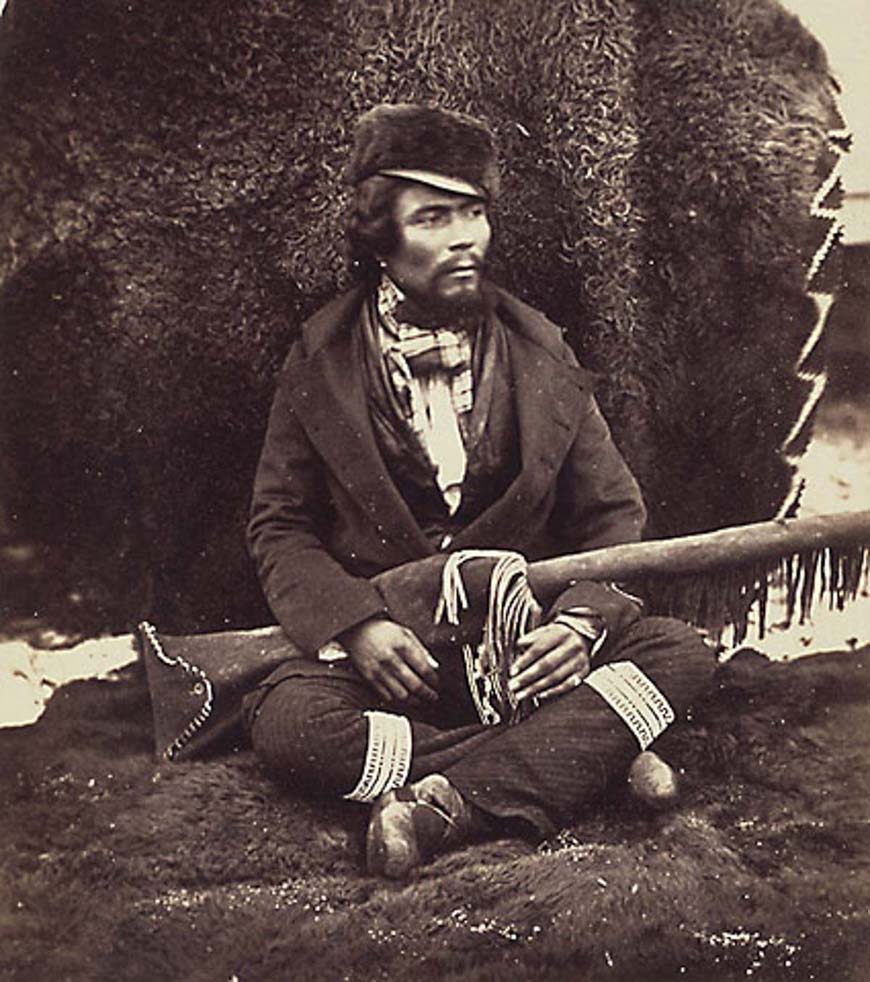
From the collection of Humphrey Lloyd Hime, MIKAN no. 3243328, Library and Archives Canada.
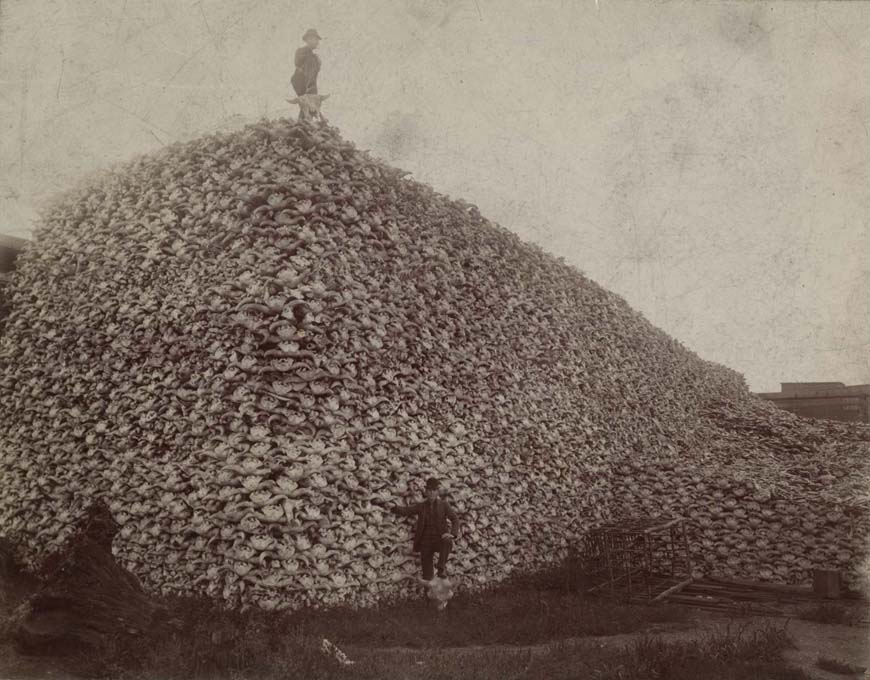
The Destruction of the Great Bison Herds
By the mid-nineteenth century there was a critical mass of people who saw bison not as something essential to life on the prairies, but as something that was an impediment to the “inevitable” future of white settlement in the area. In 1890, there were fewer than a thousand bison left on the North American continent.Endnote 29 These remaining bison were found in small isolated herds in private hands. Only a small number of wild groups of bison could be found in the newly-established Yellowstone National Park and in the northern reaches of what is now Alberta and the North-West Territories.Endnote 30 Within a single human lifetime, bison, which were once the most numerous megafauna in the world, were on the brink of extinction.
Bison had been hunted for thousands of years by Indigenous people on foot, particularly at kill sites such as buffalo pounds and buffalo jumps.Endnote 31 While hundreds of bison could be killed at a time using one of these methods, the annual natural increase of bison meant that First Nations never made a serious dent in overall bison populations.Endnote 32 The influx of horses and firearms onto the prairies in the late eighteenth century allowed hunters to selectively kill breeding-age female animals and may have added new pressure on the bison populations.Endnote 33 Environmental factors, too, may have played their part, because the nineteenth century saw drought in many areas, reducing the amount of forage bison herds could find.Endnote 34 There was also new competition over the same food resources from introduced grazers like the large cattle herds, which in the United States numbered in the millions by the end of the nineteenth century, so bison had to subsist on less forage.Endnote 35 However, by far and away the most destructive force was overhunting.

“Buffalo Hunting, Western Prairies (Kansas)”. Painted circa 1840 by Sir Henry James Warre. MIKAN no. 2834161, reproduction copy number C-031264, Library and Archives Canada.
The nineteenth century saw increased demand for existing bison products. One of these was pemmican, which was made from the dried and pounded meat of bison mixed with rendered bison fat and occasionally dried or fresh berries. Pemmican, which had been produced by Indigenous groups for thousands of years, extended the shelf-life of bison meat. Pemmican made large-scale hunts feasible and productive because the meat did not have to be consumed immediately at the kill site. While Indigenous peoples continued to produce pemmican for their own use, there was a boom in the demand for pemmican during the fur trade period. Tens of thousands of pounds of it was made each year to be traded to fur trading companies by Métis hunting parties based out of the Red River Settlement near modern Winnipeg.Endnote 36
However, while the commercial demand for pemmican did increase the number of bison killed each year, wasteful hunting that encouraged mass slaughter was blamed for the dramatic decline of the bison: hunting for tongues, robes, and sport.Endnote 37 Instead of hunting bison for its meat and other attributes, leaving little to go to waste, a market emerged in the nineteenth century for specific bison products that encouraged hunters (of First Nations, Métis, and European background) to kill bison for only one part while leaving the rest of the animal to rot. Bison tongues were considered a delicacy in Europe, as they were among First Nations, but when salted they could be shipped east in barrels at great profits.Endnote 38Sport hunters (those who hunted for the thrill or for the trophies, not out of need), came in larger and larger droves to kill bison, especially after the construction of the Union Pacific, Northern Pacific, and Southern Railroads in the American West. There are many accounts of people taking shots at bison herds from moving trains to relieve the boredom of the journey or for the thrill; any animals hit were left to die and their bodies left unused by the ones who had killed them.Endnote 39 During the 1860s and 1870s, the American government was at war with groups such as the Sioux, the Lakota, and the Cheyenne, and many argue that American troops were deliberately encouraged to overhunt bison to starve and forcibly “pacify” Native Americans onto reservations.Endnote 40 Bison paid no mind to the artificial border at the 49th parallel, and so bison herds killed in the United States which may have normally migrated north meant that American policy also affected “Canadian” territory.
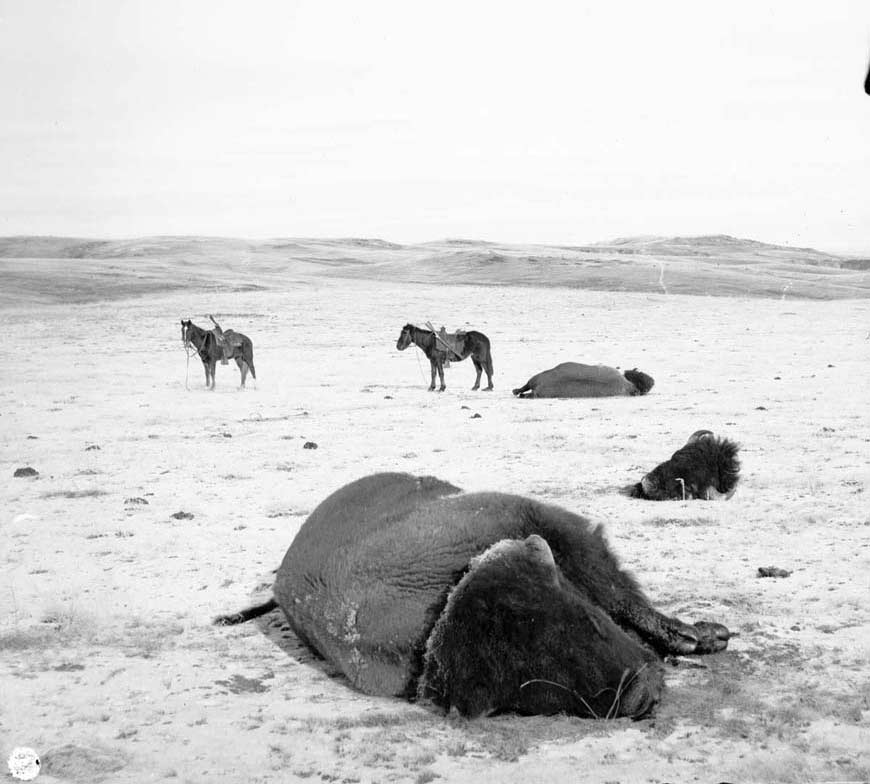
“After the Chase, After the Buffalo Run. Northern Montana.” January, 1882. Photograph by L.A. Huffman. Catalog #981-010. Montana Historical Society Research Center Photograph Archives, Helena, MT.
Buffalo robe hunters spurred the sharp decline in bison populations in the 1840s through 1870s.Endnote 41 European firearms made it easier to kill choice, healthy animals.Endnote 42 The price of shipping heavy and bulky buffalo robes became much cheaper and therefore the enterprise became more profitable after the introduction of steam boats onto the Upper Missouri River and the completion of railways in the American West.Endnote 43 Steamboats and trains both brought more Europeans deeper into the West, to bison territory, than ever before, and made the extraction of bison resources – meat, hides, and later, bones – financially viable. Bison hides were discovered to be ideal for drive belts of new industrial machines.Endnote 44 As early as 1840, 100,000 robes were being shipped annually down the Upper Missouri, and “conservative” estimates from the years 1872-1874 in the Santa Fe region put the figure at over 1 million robes.Endnote 45 The number of robes delivered only represents a portion of the animals killed during hunts whose hides were spoiled by rot, scavengers, the hide skinner, or were otherwise of too poor quality to either collect or sell. As Colonel Richard Dodge reflected in 1883: “From want of skill in shooting, and want of knowledge in preserving the hides of those slain, one hide sent to market represented three, four, or even five dead buffalo.”Endnote 46 Buffalo robe hunters harassed herds even during the rut, which meant fewer calves were born in the 1870s. Not only were they killing living bison, they were preventing the birth of the next generation.Endnote 47 The last known wild plains bison in Canadian territory was seen in 1881.Endnote 48
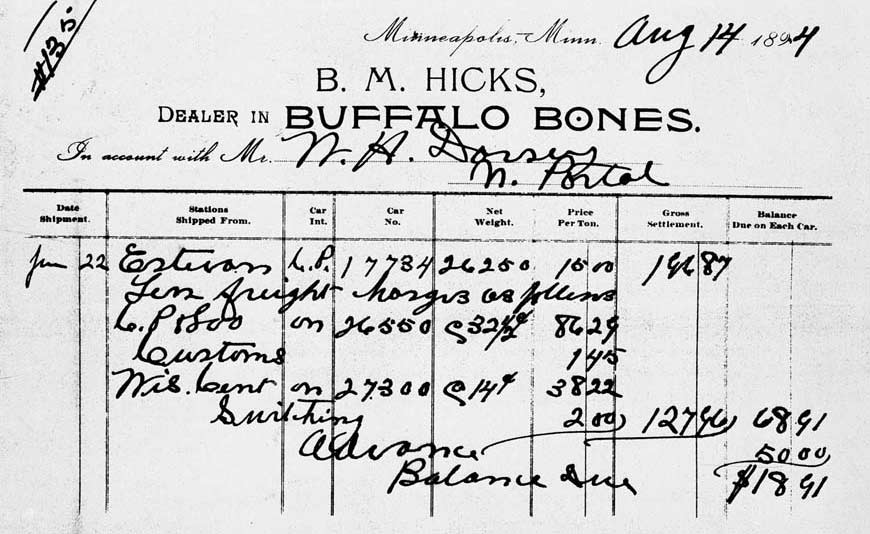
Glenbow Archives NA-2311-2.
The bones of bison long killed and bleached white by the sun were still being gathered by new farmers and settlers well into the 1890s and 1900s to be sent east and used in the refinement of sugar or the creation of fertilizer and gunpowder, removing those nutrients from the ecosystem.Endnote 49 In the face of the mass exploitation of this supposedly infinitely renewable resource, the bison population had all but completely collapsed by 1890, leaving only a few stragglers and piles of bones scattered across the prairie.
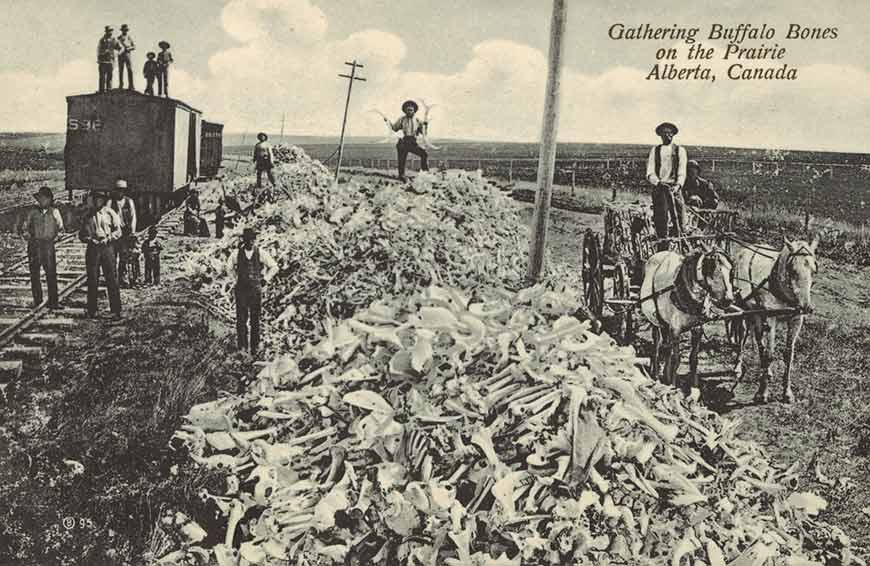
PC009268. Image courtesy of Peel's Prairie Provinces (peel.library.ualberta.ca), a digital initiative ofthe University of Alberta Libraries.
To Banff By Way of Politicians: James McKay, Samuel Bedson, Lord Strathcona, and the Display Herd at Banff (1897 to 1997)
As the bison herds declined, some individuals tried to protect bison by capturing wild animals and raising them domestically.Endnote 50 The world’s population of bison today came from only a handful of discrete populations that were all captured in the late nineteenth century.
One such group was known as the Bedson Herd and it was the main source of the plains bison that would ultimately be in Banff’s buffalo paddock for nearly a century.
The only Canadian bison stock in Banff came originally from Saskatchewan. James McKay, a Métis MLA for Manitoba, interpreter at the Numbered Treaties, and hunting guide, together with McKay’s partner Charles Alloway, captured bison in 1873 and 1874 from the Battleford area. They raised those bison near modern day Winnipeg.Endnote 51 When McKay died in 1879, his herd of thirteen bison was auctioned off. Over 1500 people were said to have been present at the auction as spectators. The bison were purchased by Samuel Bedson for a grand total of $1000, part of which he had to borrow from Sir Donald Smith, Lord Strathcona, who was the bearded man pictured in the famous photograph of the last spike being driven into the Canadian Pacific Railway a few years later. Bedson was the warden of the Stony Mountain Federal Penitentiary near Winnipeg, and he had a pen built for his bison herd nearby. Locals called this pen “the castle”, and Bedson, by extension, was called “The King of the Castle.” Thirteen bison soon became fourteen, as one of the bison cows gave birth just after the auction. These bison were driven to their new home at the penitentiary, but quickly escaped and had to be rounded up and returned. The little newborn calf still kept up with the herd the entire journey: a grand total of 63 miles in 36 hours. The last Canadian plains bison were of hardy stock.Endnote 52
Bedson’s herd grew to 118 animals, at which point it became increasingly difficult to keep the herd. Some were given to Sir Donald Smith to pay back his debt from the initial purchase, and a few individual bison were sold elsewhere. Bedson largely sold his herd to Charles “Buffalo” Jones of Kansas. With this sale, the largest Canadian herd of plains bison went south to the United States. The modest herd that remained with Sir Donald Smith would go on to be the foundation of the display herd of bison in Banff and a small herd for Winnipeg’s Assiniboine Park.Endnote 53
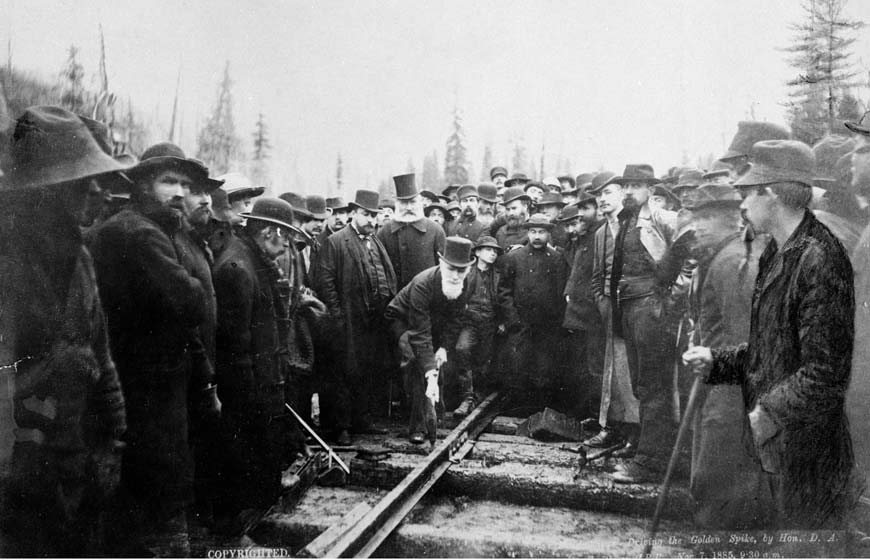
MIKAN no. 3194528, reproduction copy number C-003693, Library and Archives Canada.
The Canadian government has been involved in bison conservation since 1897, when the first display her d of bison was installed in Banff National Park, then Rocky Mountains Park. Banff’s herd of bison began with a small donation of three bison (one bull and two cows) from the Charles Goodnight herd in Texas by T.G. Blackstock, a Toronto lawyer. They were placed in a makeshift paddock at the former North West Mounted Police station. The following year, the herd was supplemented by thirteen bison donated to Banff by Lord Strathcona and were placed in a new paddock east of the Canadian Pacific Railway station. In 1902 two bison bulls wer e brought to Banff from the small Corbin herd in New Hampshire, which had been purchased from Buffalo Jones in Texas.Endnote 54Even in its early years, Banff was a source of bison for other Canadian herds. Seven bison from Banff were sent to Elk Park (later Elk Island National Park) in 1907 in exchange for sixteen of Elk Island’s bulls, and 77 of Banff’s bison were sent to Buffalo National Park at Wainwright to supplement their herd.Endnote 55 A tradition of transfers of bison between national parks was established early.
Bison were a part of the popular experience and memory of Banff National Park for most of the twentieth century. Many postcards from the early years of bison in Banff showed a large bull named in honour of Lord Strathcona, “Sir Donald”. He had been captured near Prince Albert in 1873. When this bison died in 1909 at the venerable age of 36, his head was mounted and hung in the office of the park commissioner.Endnote 56 For a century, bison, alongside pronghorn antelope, elk, bighorn sheep, and other animals were kept in a paddock, enclosed on three sides by high wire fences. The fourth side was the sheer rock of Cascade Mountain. The bison numbers were managed through controlled culls, which provided meat for Banff Indian Days as well as food for park workers. In 1909 the population peaked at 107 bison, but by the 1960s, despite supplementary bison from Elk Island there were only a handful in the paddock. Even with only 10 or so bison, the paddock was overgrazed.Endnote 57
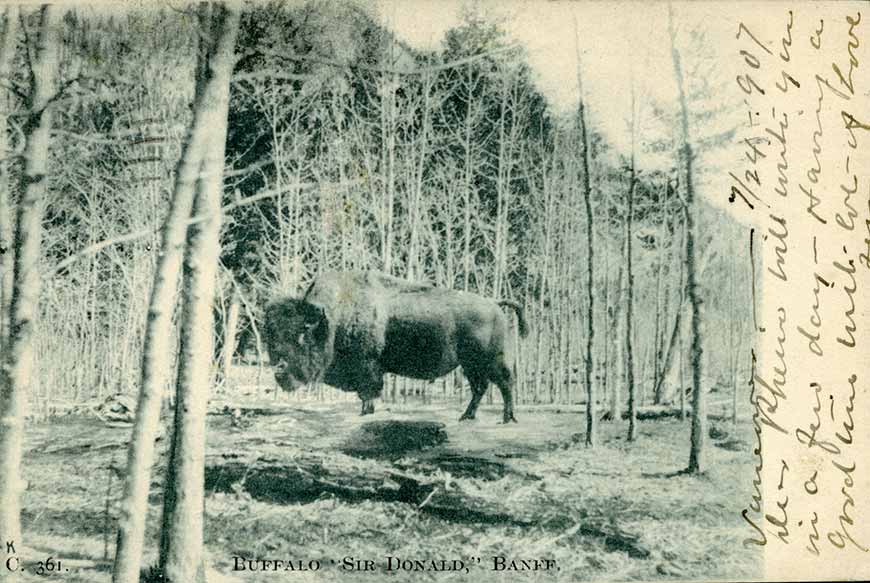
PC010047. Image courtesy of Peel's Prairie Provinces (peel.library.ualberta.ca), a digital initiative of the University of Alberta Libraries.
Lord Strathcona’s herd and their descendants were kept in Banff for nearly an entire century. In 1981, five wood bison fr om Elk Island stock replaced the dwindling herd of plains bison. At this time, wood bison were considered an endangered species, and so Banff became the third wood bison conservation herd in the world, after Elk Island and the Mackenzie River Bison Sanctuary. This small display herd in Banff provided individuals to support wood bison rehabilitation programs elsewhere. However, the wood bison herd never grew large. In 1997, the Buffalo Paddock was removed to encourage the free movement of wildlife.Endnote 58 At that time, the remaining bison were removed, and there were no bison in Banff for twenty years.Endnote 59
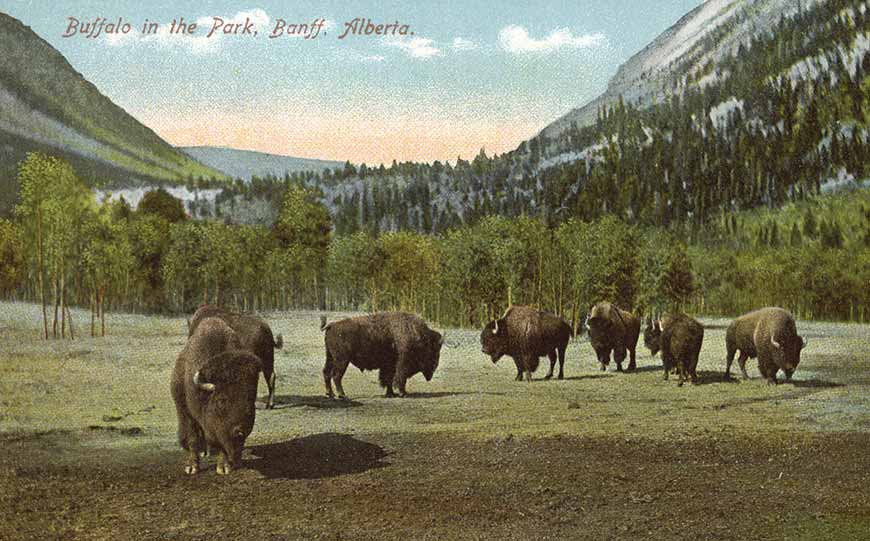
PC007473. Image courtesy of Peel's Prairie Provinces (peel.library.ualberta.ca), a digital initiative of the University of Alberta Libraries.
Banff holds pride of place as being not only Canada’s first national park but also the location of its first conservation her d of bison. In February 2017, a small group of pregnant females and yearling bulls from Elk Island National Park was reintroduced to the remote Panther Valley area of Banff.Endnote 60 These young bison will form the nucleus of a semi-free roaming herd in the mountain valleys where they once roamed for thousands of years.
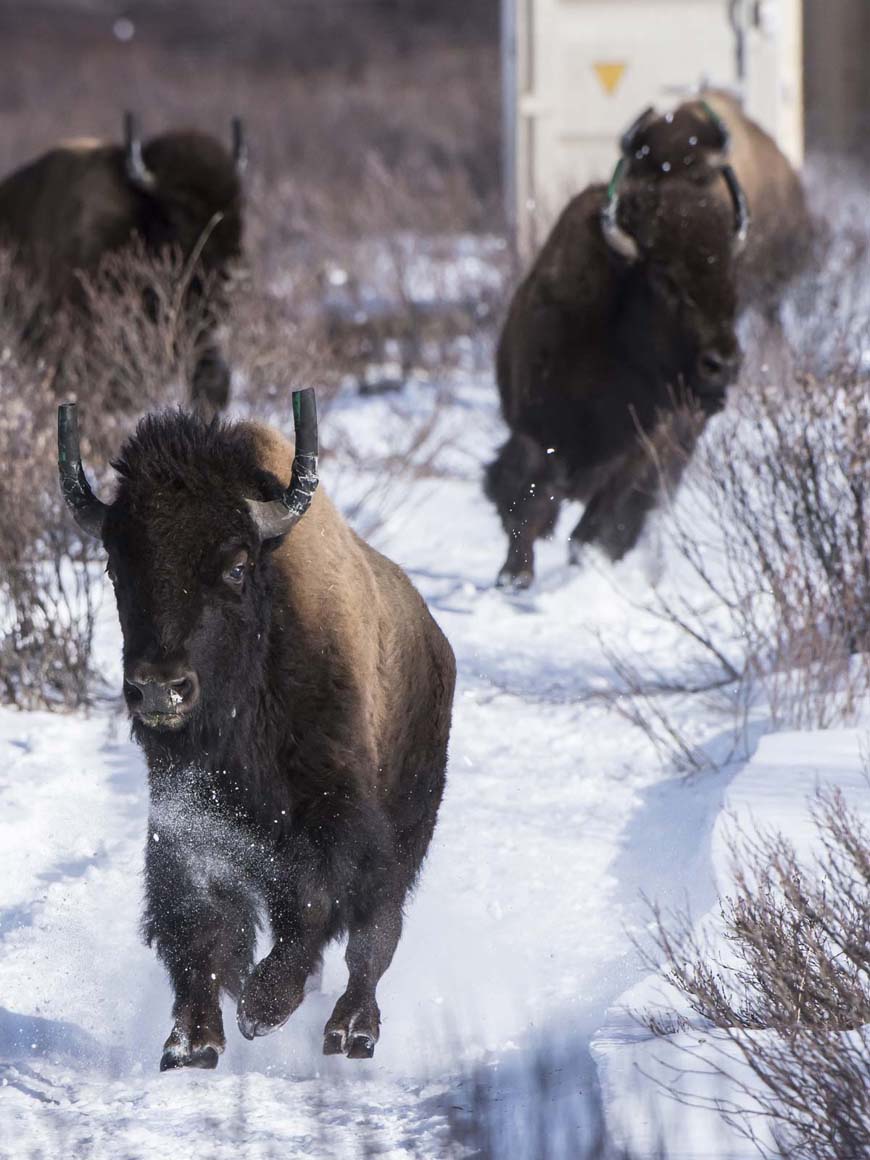
Dan Rafla / © Parks Canada
The Pablo-Allard Herd (1884 to 1906)

Catalog #ST001.049. Montana Historical Society Research Center Photograph Archives, Helena, MT.
The bulk of the plains bison in Canada today came not from Banff, but from a single source: the Pablo-Allard herd. Some researchers estimate that over 80% of plains bison today are descendants of this one herd.Endnote 61 Canada’s plains bison seed herd is said to have originated with a man called Samuel Walking Coyote, a Kalispel (Pend d’Oreille) Native man who lived and hunted in Montana and what is now Southern Alberta. However, oral history evidence recently brought to light suggests a new narrative. According to author Harvey Locke, a man named Atatitsa (Peregrine Falcon Robe) conceived of the idea to save the bison, and his son Latatitsa (Little Peregrine Falcon Robe) may have actually captured and cared for these bison.Endnote 62 As the original story goes, in 1873 or 1874, Walking Coyote captured four bison calves after a hunt: two male and two female. It is said that the orphaned calves followed his horse home, as they were herd animals separated from their mothers. Walking Coyote raised them at the St. Ignatius Mission in the middle of the Flathead reservation, where they became quite tame. By 1884, the herd grew to number thirteen individuals, at which point Walking Coyote sold them to two mixed-blood ranchers: Charles Allard and Michel Pablo.Endnote 63
Allard and Pablo grazed their bison on the Flathead reservation land, and bolstered their genetic stock with the purchase of bison from Charles “Buffalo” Jones in 1893. While Jones had captured some bison in Kansas and Texas, some of Jones’ bison were purchased from Samuel Bedson, which had been originally captured by James McKay in Saskatchewan.Endnote 64 With such different places of origin, the herd held by Pablo and Allard had genetic stock from all over the continent: Saskatchewan, Texas, Kansas, and Montana. These bison were kept cattle-gene free because the cattle-buffalo hybrids they purchased from Jones “were never allowed to mix with the thoroughbreds on the range, but were collected and sequestrated on Horse Island in the Flathead Lake.”Endnote 65The herd’s origins may have been small, but the plains bison kept by Pablo and Allard were very genetically diverse.
After Allard’s death in 1896, the herd was divided between the Pablo and Allard families; Allard’s estate sold some to Charles Conrad, which formed the basis of the herd at the National Bison Range in Montana. In 1904, the American government opened up the Flathead Indian Reservation land to white settlement, so Pablo could no longer graze his bison on those 1.3 million acres as he had done previously.Endnote 66 He tried to sell the herd to the American government but was rejected. Eventually, the Canadian government agreed to purchase what was considered the largest and finest bison herd on the continent.Endnote 67 Howard Douglas, then the superintendent of Rocky Mountains (Banff) National Park, was very pleased at the possibility of acquiring this herd from the Americans, writing that “with the wild herd in the North [wood bison] and this bunch, Canada would own 8/10 bison living.”Endnote 68
It took several years and multiple roundups to finally track down all of Pablo’s bison and get them onto specially constructed, reinforced railcars to be shipped North of the Medicine Line: the 49th parallel.Endnote 69 This was no easy task. These were wild bison. Pablo had initially estimated that he had about 400 bison; as it turns out he had nearly 800. What he thought would be a roundup lasting a single summer took five years.
The photographs that follow were taken by N.A. Forsyth during the roundup. They are stereographs: images that produce a 3D effect when viewed through a stereograph reader. The quotations are all from contemporary newspapers describing the events of the last great buffalo roundup.
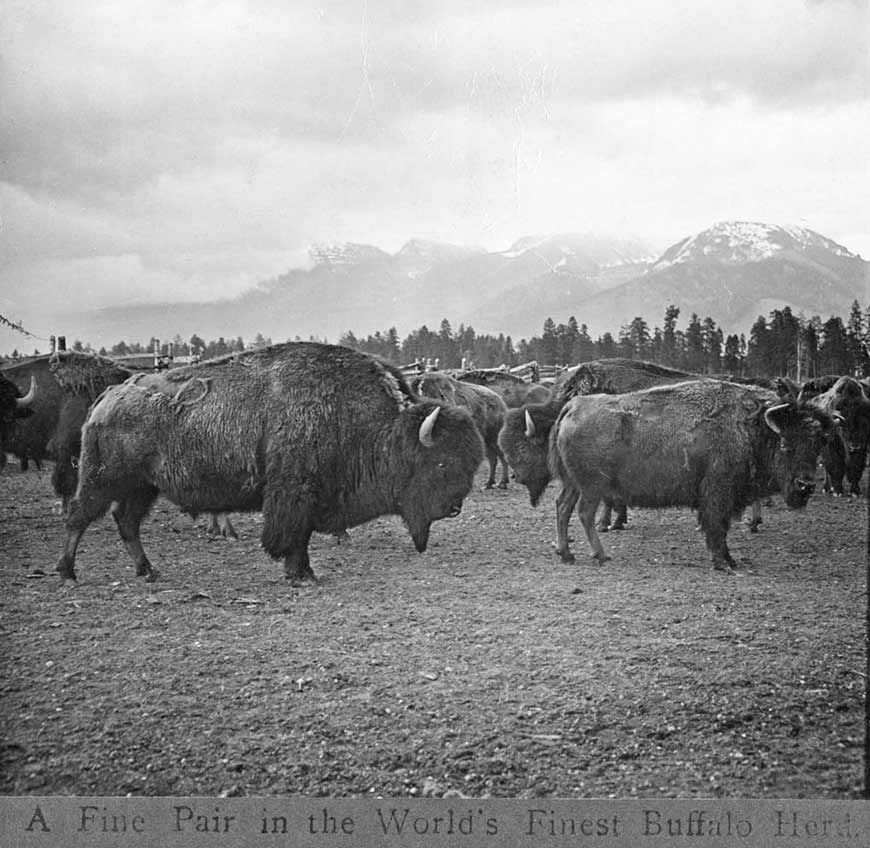
“Thirty years ago it was thought that the last buffalo hunt had passed into history when the scattered remnants of the mighty, innumerable herds that once roamed over the vast territory from the valley of the Mississippi to the Rocky Mountains and from the Rio Grande to Great Slave Lake had been ruthlessly and wantonly slaughtered. . . Consequently a real buffalo chase in these days when people have become accustomed to speak of the bison as a vanished race is an occurrence at once unique and interesting. . .”
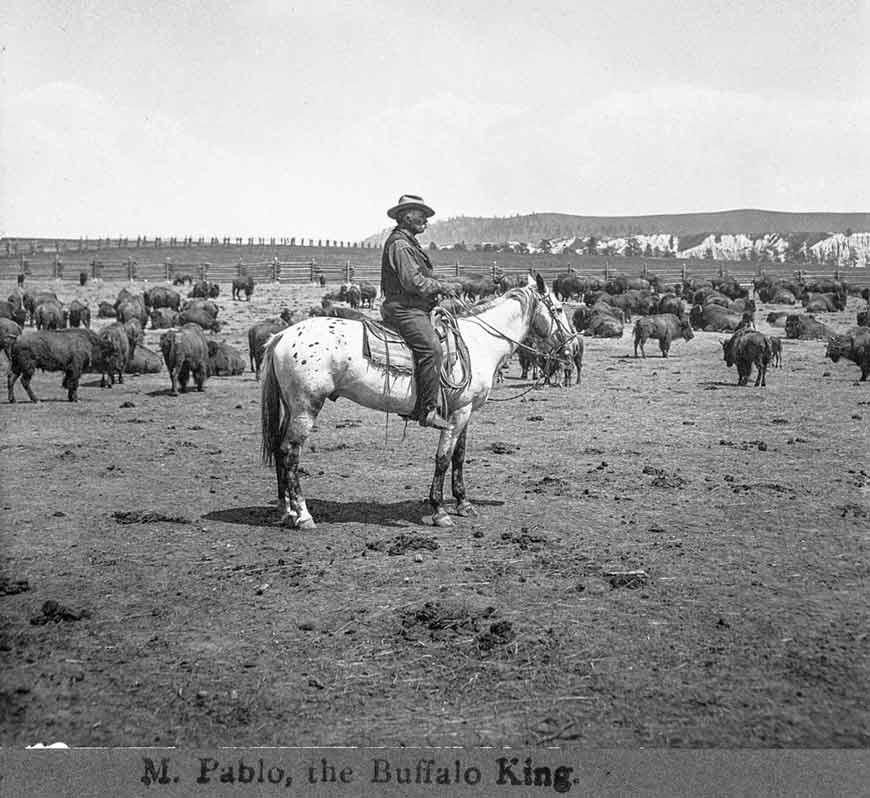
“He belongs to the ranching period and is a striking example of what a man of determination may accomplish in achieving success in the face of adverse circumstances sufficient to discourage the majority. Of magnificent physique bred by a strenuous life in the open, tall and still erect he carries his 68 years so lightly that he might easily be mistaken for a man of 50. Quiet determination is stamped on his features, while his other dominant characteristics would single him out as a leader in any community. . . . There he is a little king in his own way with none to dispute his sway. . . . Among those who know him best Mr. Pablo is regarded as the soul of honour and he enjoys their esteem accordingly.”
“When the sale to a foreign country was positively confirmed it aroused a storm of opposition and criticism, especially in Montana, where it was looked upon as a distinct and national loss. . . . Offers of double and nearly treble the price Canada was paying were officially made to Mr. Pablo, presumably with the hope that the great monetary consideration of nearly a quarter of a million dollars might be an inducement sufficiently alluring to cause him to break his bargain. . . . But Mr. Pablo. . . is a gentleman of sterling integrity, one whose word is bond . . . . It stands greatly to his credit that all the alluring offers for his buffalo, even the one of $700 a head, were quietly refused on the ground that a bargain is a bargain and as such is sacred. He had resolutely made up his mind that Canada . . . should reap the reward of enterprise and straightforward dealing.”
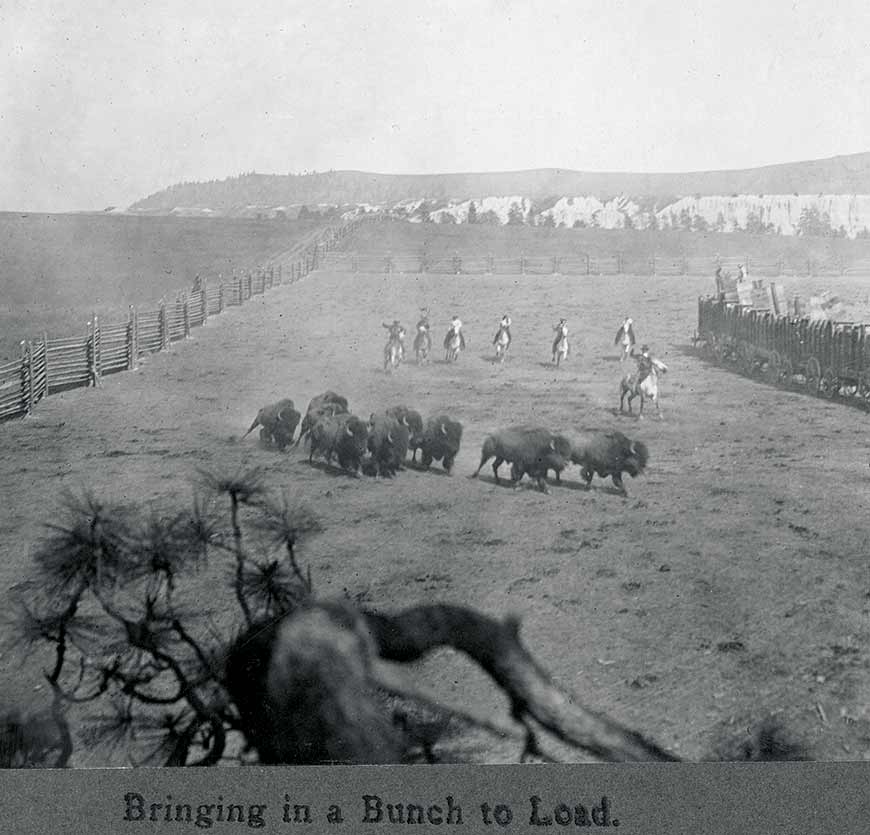
“The drives . . . were as spectacular as anything ever seen on the range. The battle grounds were in the bad lands of Pend d’Oreille and in the foothills of the mountains, where every man took his life in his hands in the dare-devil dashes hither and thither, through cuts and ravines, over ridges and foothills or down the valleys honeycombed by the dry courses of the mountain torrents, in fast and furious pursuit of the bands of buffalo. . .”
“Sometimes the cowboys were the pursuers and sometimes they were pursued. In cases where their anxiety to turn an animal carried them closer to the buffalo than discretion should warrant, a vicious charge would result, and the rider would have to extend his horse to the limit to escape from the horns of the furious monster.”



“To get a good idea of the difficulties that attend this work, take the most ‘ornery’ range steer, multiply his meanness by 10, his stubbornness by 15, his strength by 40, his endurance by 50 and then add the products: you will then have some conception of the patience and skill that are required to load buffalo into a stock car.”
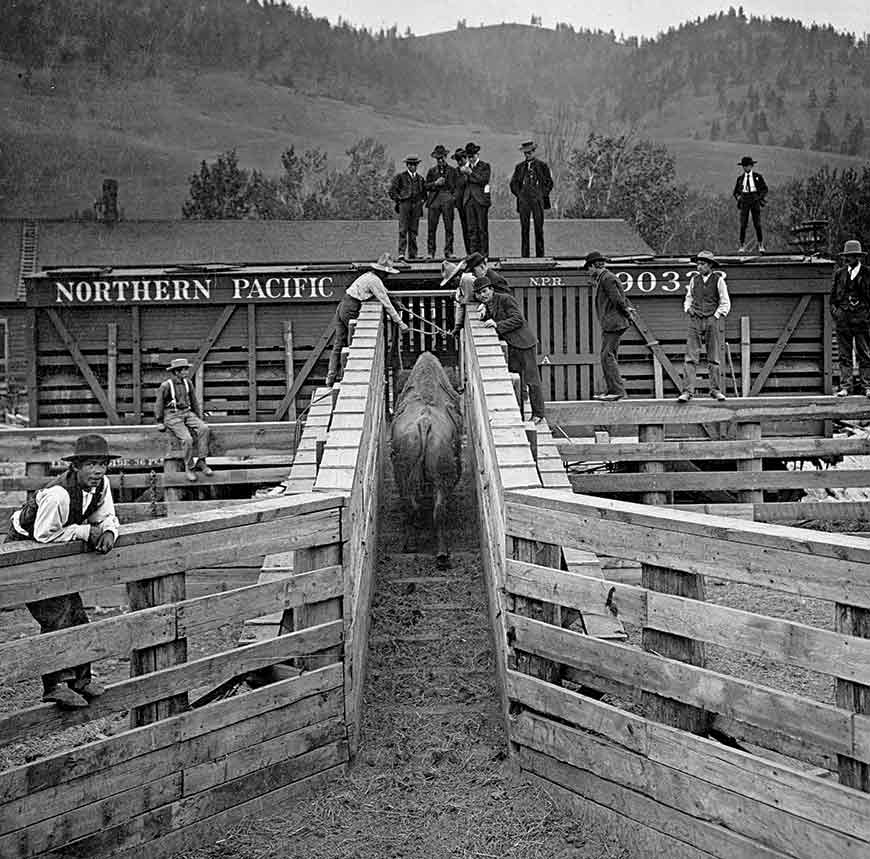
Elk Park Way Station (1907 to 1909)
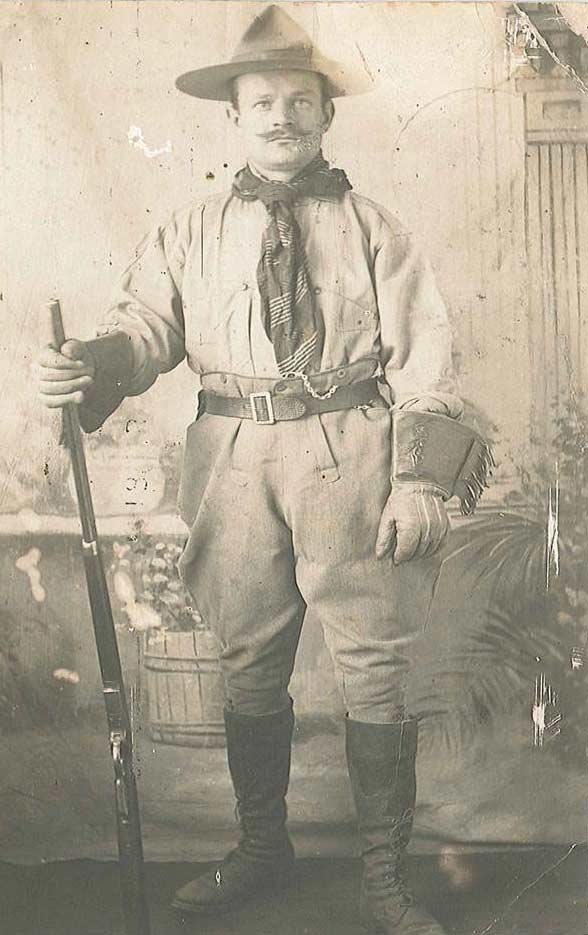
Image courtesy of descendant Vivian Young.
Elk Park, as its name suggests, was founded as an elk preserve – the first federally controlled game preserve in Canada.Endnote 70 However, only a year after its creation, the site played host to a large herd of bison from Montana. The Canadian government had set aside land near Wainwright, Alberta, for a new national park, but its buildings and fences were not yet completed at the time of the first shipment of Pablo’s bison. Elk Park (later Elk Island National Park) was conveniently located near a rail station, and, best of all, it was already entirely surrounded by fences. It was a perfect way station for the bison.Endnote 71
The bison were only supposed to be at Elk Park temporarily but they quickly became a main feature of the park. From their first arrival, they caused a sensation among the locals.Endnote 72 There had not been any bison in the Edmonton area for more than thirty years and thousands of people came and marvelled at these “Monarchs of the Plains.”Endnote 73 In 1909, however, the fences of the new Buffalo National Park near Wainwright were completed. The bison at Elk Island were rounded up and shipped to the new park. However, the bison had grown popular in Edmonton and the Minister of the Interior, Edmontonian Frank Oliver, ordered a small demonstration herd left behind.Endnote 74 It was those 30 - 50 bison that formed the nucleus of the herd of plains bison at Elk Island today – a herd that would grow over the years and see individuals sent to support several dozen conservation projects.Endnote 75 It is a good thing that these bison remained at Elk Island, because things did not go well for Buffalo National Park.
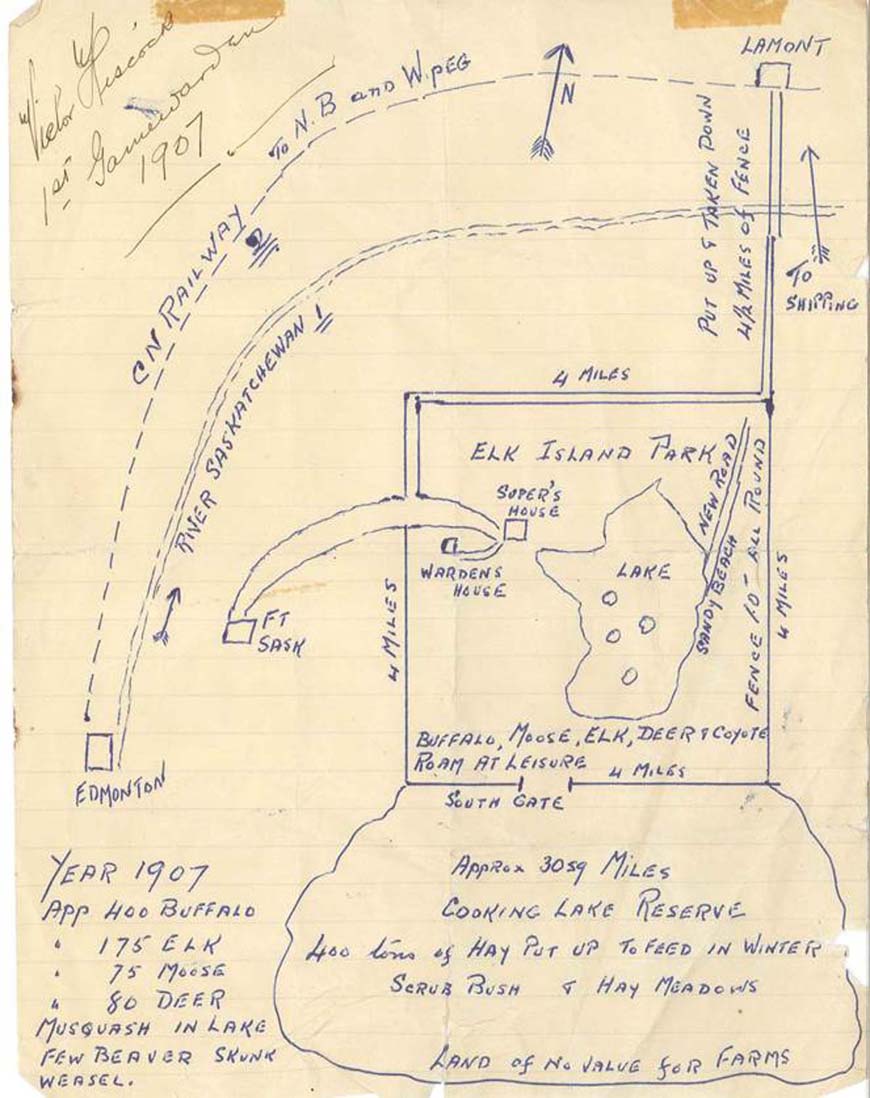
courtesy of descendant Vivian Young
Lessons Learned From Buffalo National Park (1909 to 1939)
Buffalo National Park was only in operation for three decades and was the site of both successes and failures. Burgeoning populations of bison, for instance, created hope for the future survival of the species, but led to problems of overpopulation. The bison at Wainwright increased rapidly, and it became a popular tourist draw as people flocked to see a species that had so recently been on the brink of extinction.Endnote 76 However, Buffalo National Park was plagued by problems with disease, overgrazing, and lack of federal funding and interest.
The fences at Buffalo National Park near Wainwright, Alberta, were completed in 1909. Elk Island had only received a portion of bison from Pablo in Montana at that time. Elk Island shipped the majority of their bison to Wainwright in 1909. The remaining bison from Pablo’s herd were shipped to Buffalo National Park from Montana by 1912. The Wainwright herd was also supplemented by bison from the Conrad herd in Montana and from the Banff herd, with the final shipment arriving in 1914 for a total of 748 bison.Endnote 77
The population of bison in this new national park flourished and grew rapidly. Too rapidly.Endnote 78 In only a few years, the population more than doubled and it was soon considered the largest herd of bison in the world.Endnote 79 After 1921, the population increased at a rate of about 1,000 bison per year, resulting in the need for annual slaughters and other drastic measures.Endnote 80 In 1925, their population peaked at 8,832 head, far beyond the estimated 5,000 head carrying capacity. There were also large populations of other ungulates such as moose, elk, antelope and deer.Endnote 81 Soon, Buffalo National Park operations were dominated by the question of what to do with the “extra” ungulates.
The park suffered from problems with overpopulation throughout its history until it closed in 1939. By the 1920s, park staff observed that the range was overgrazed and that the ungulates were in poor condition. The first case of tuberculosis was found in the park’s bison in 1916, but it was not an isolated case. Three-quarters of the cull in 1923-24 showed signs of tuberculosis. The crowded conditions only accelerated the spread of disease and parasites.Endnote 83 In the 1920s, the controversial decision was made to ship over 6,000 plains bison (many infected with tuberculosis) to Wood Buffalo National Park in northeastern Alberta. This shipment was an attempt to alleviate overpopulation problems at Buffalo National Park in a way that did not incur public outcry. Nevertheless, annual mass slaughters of bison became routine at Wainwright.Endnote 84 The park was effectively run as a ranch, with a large bison herd as the product. During its three decades of operation there were multiple schemes, such as the sale of meat and taxidermy bison heads, to make the bison herd profitable, mainly because the federal government was largely disinterested in providing the park with the necessary funds it needed to run. A Hollywood silent film, The Last Frontier, was shot at Buffalo National Park in 1923 but got negative press because in the process of filming thirty-four bison were killed.Endnote 82
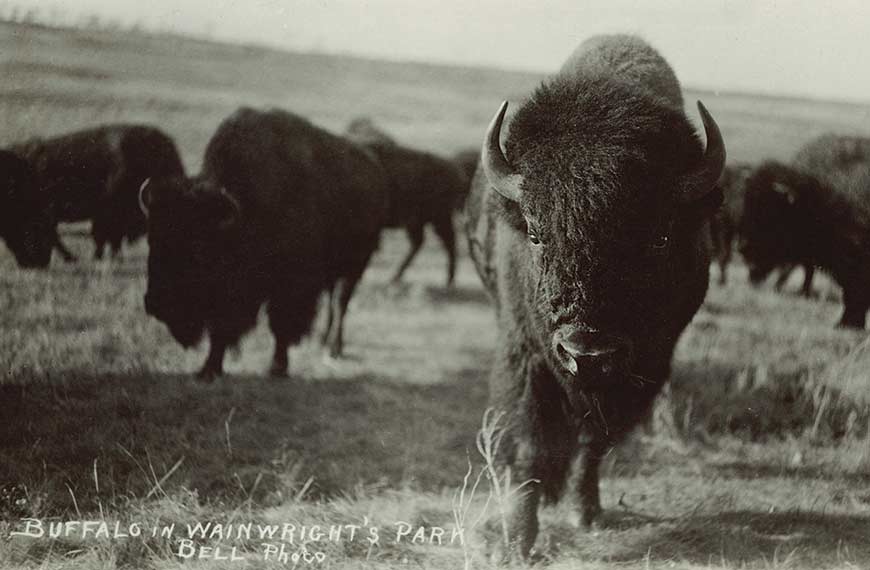
PC005127. Image courtesy of Peel's Prairie Provinces (peel.library.ualberta.ca), a digital initiative of the University of Alberta Libraries.
The recovery of a healthy plains bison herd at Buffalo National Park was hampered by early misguided animal management efforts. For instance, in the 1920s it was believed that bison were at the more primitive end of an evolutionary continuum that would eventually lead to the “perfection” of European domestic cattle. Yaks from Asia were thought to be at a halfway point between bison and domestic cattle. The park conducted hybridization experiments, breeding bison with yaks and cows, producing “yakkalo” and “cattalo” hybrids which may have further spread bovine diseases from cattle to wildlife in the park.Endnote 85
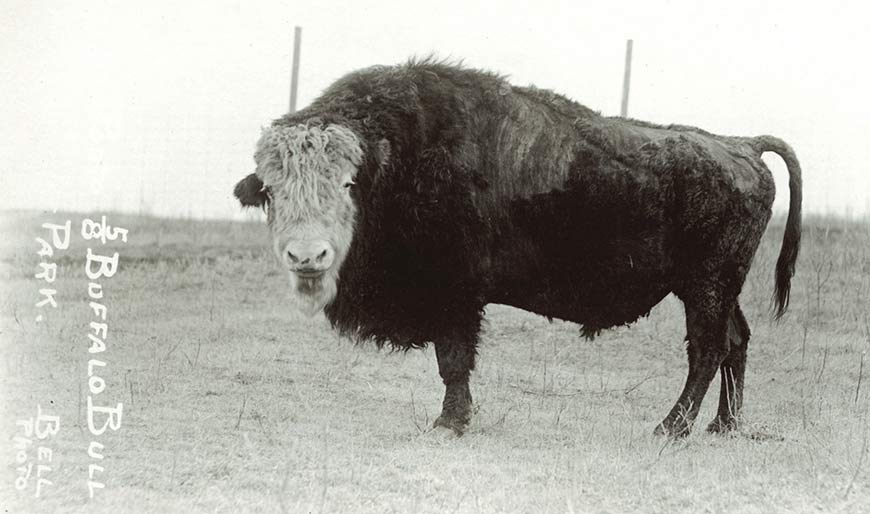
PC010948. Image courtesy of Peel's Prairie Provinces (peel.library.ualberta.ca), a digital initiative of the University of Alberta Libraries.
Buffalo National Park officially ceased to exist in 1947, though the park had closed and had all its remaining animals destroyed in 1939. The park’s land was converted into a military base: Canadian Forces Base Wainwright.Endnote 86 In 1980, to celebrate the 75th anniversary of the foundation of Alberta as a province, a small display herd of plains bison from Elk Island was placed on the grounds of the base, where they can still be seen today. Bison still roam the landscape of former Buffalo National Park.Endnote 87
Top of pageSecuring the Last of the Northern Bison: The Foundation of Wood Buffalo National Park (1922)
Wood bison, in their harsher and more northerly range, may have only ever numbered 168,000 at their peak. They, too, suffered a sharp decline due to overhunting in the nineteenth century.Endnote 88 After their decline, one population survey of wood bison was conducted. In 1902, Charles Camsell, a junior member of the Geological Survey of Canada, left Fort Smith in search of the elusive wood bison, rumoured to still be roaming what was then the North-West Territories in small numbers. Thanks to his guides, in the weeks that followed he saw many tracks and one small herd of bison. Based on his sightings, he estimated that there were perhaps 300 wild wood bison in the area, though he offered no rationale for this extrapolation.Endnote 89 The number of surviving wood bison at their lowest point may have been even fewer than that.Endnote 90 This small population of bison remained largely unprotected and was occasionally hunted by both Indigenous people and sport hunters, despite a hunting prohibition by the federal government. In 1911, the Forestry Branch founded the Buffalo Rangers to protect these bison, but had difficulty enforcing game laws.Endnote 91 Wood Buffalo National Park was founded in 1922 to protect the few remaining examples of wood bison. These bison are the only conservation herd in Canada that have lived in their territory continuously, without being extirpated and reintroduced from elsewhere. They are also the only bison that have experienced an uninterrupted predator/prey relationship with wolves.Endnote 92
Since the early twentieth century, researchers have debated whether or not the large wood bison (Bison bison athabascae) should truly be considered a subspecies distinct from plains bison (Bison bison bison) or if the clear visual differences between the two can be attributed to environmental factors.Endnote 93 Wood Buffalo National Park was founded regardless of these debates because the bison that were living in that area were considered by the park founders to be “the finest specimens of their species, superior in pelage, size, and vigour to those of the plains whose descendants to-day exist in our parks.”Endnote 94 This bison population was considered “in a class by itself,” describes researcher W. A. Fuller, “suggest[ing] that they were worth preserving whether or not they were formally recognized as a subspecies.”Endnote 95 Parks Canada and other conservation groups operate under the guideline that wood bison are a distinct and separate subspecies and ideally, should not be hybridized with plains bison.
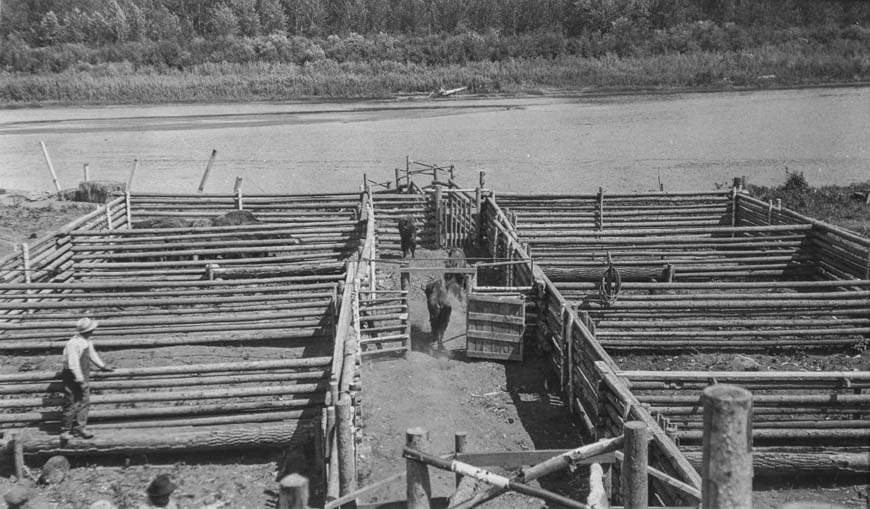
Provincial Archives of Alberta, A4722
In the 1920s, the wood bison herd’s genetic purity and health at Wood Buffalo National Park was jeopardized when 6,673 plains bison were transferred from Buffalo National Park. Fuller describes how the transfer was justified on three unsubstantiated assumptions: that the bison from Wainwright would be introduced into an area that was separated from the existing Wood Buffalo National Park herd by an unpassable stretch of muskeg and marshy land, that the distinctions between wood bison and plains bison “were superficial and due to environmental factors,” and that the transferred animals were too young to be carriers of infectious diseases like tuberculosis.Endnote 96Fuller asserts that all three of these arguments have since been proven false. Hybridization and disease were soon discovered.Endnote 97 The decision to introduce plains bison into Wood Buffalo National Park was controversial at the time as well. In 1922, Dr. Thomas Barbour, Director of the Museum of Comparative Zoology at Harvard University condemned the transfer of diseased plains bison to Wood Buffalo National Park, calling it “…one of the most tragic examples of bureaucratic stupidity in all history.”Endnote 98 Bison expert Wes Olson believes that the fact that “the near extinction of the species was still fresh in people’s minds” precipitated the decision to allow the transfer of these animals from the overpopulated herd near Wainwright despite the risk of hybridization and the introduction of diseases into a healthy population of wood bison.Endnote 99 For decades, the wood bison subspecies was feared lost.
In 1958, Dr. N.S. Novakowski, a researcher with the Canadian Wildlife Service, discovered a herd of about 200 individuals in the Nyarling River region, in the northern portion of the park, that seemed to display all the characteristics of pure wood bison. Experts examined both live and deceased individuals trapped and held at Fort Smith, and determined that they were examples of the wood bison subspecies. Their conclusion has since been debated, and recent evidence suggests that this herd of wood bison had some distant plains bison ancestors.Endnote 100 Nevertheless, Fuller and other researchers believe that this population is “the closest we will ever see to the original Wood Bison.”Endnote 101 After being declared disease-free in 1963, eighteen of these animals were sent to form the basis of the herd at the newly-founded Mackenzie Bison Sanctuary, across impassable terrain – Greater Slave Lake.Endnote 102 The remaining twenty-two wood bison were sent to Elk Island National Park.Endnote 103
Today, despite debates surrounding the hybridization and disease status of its animals, Wood Buffalo National Park still maintains the largest herd of free-ranging bison in North America.
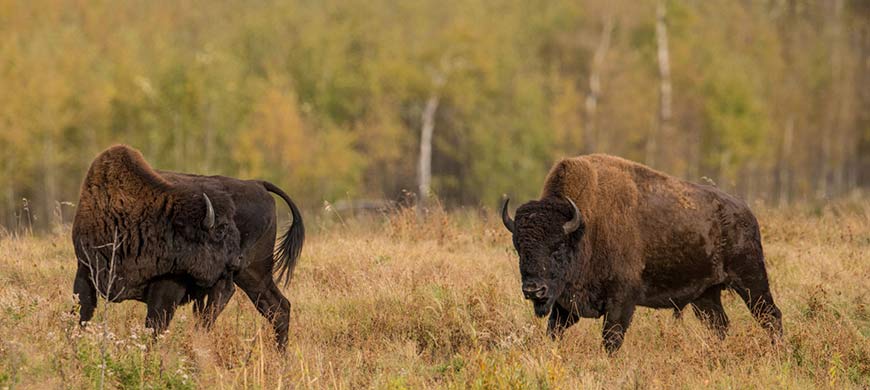
Steve Edgerton / © Parks Canada
A Second Chance for Wood Bison: Bison at Elk Island National Park (1965 to Present)
Elk Island is the only national park that maintains herds of both North American subspecies of bison. In total, twenty-two wood bison arrived at Elk Island in 1965 in the hopes that such a herd, far removed from other disease stricken populations, would serve as insurance for the subspecies’ recovery.Endnote 104 They were placed in what was formerly the Isolation Area South of the Yellowhead Highway, which was cleared in the same year of its plains bison herd as well as all other ungulates, who were considered potential disease-carriers. This action was taken to give the wood bison the best chance to become established as a healthy herd.Endnote 105
The unexpected discovery of disease after the twenty-two wood bison arrived at Elk Island from Wood Buffalo National Park resulted in extreme precautionary actions in order to eliminate the threat and spread of disease. Prior to their shipment, the twenty-two bison had reacted negatively to tests for brucellosis and tuberculosis and were thought to be disease-free. However, subsequent tests after they arrived at Elk Island demonstrated otherwise when several of the founding animals were suspected of having brucellosis. Despite the removal of diseased individuals, the park did not want to take any risks in the loss of such a precious herd and eventually destroyed all of the founding adults who arrived in the park, leaving only young calves. Staff took care to remove pregnant females only after they had given birth since there was no risk of disease transfer to the newly born calves so long as they had not begun nursing.Endnote 106 These disease-free but orphaned calves bolstered the remaining numbers of the small wood bison herd and were bottle-fed by park staff to ensure their survival.Endnote 107 According to Wes Olson, who worked for many years at Elk Island National Park:
The calves were often named by the staff who took care of them, and included such individuals as Stumpy and Buffy. Buffy continued to seek the company of people throughout the remainder of her life, and would often leave the herd to come for a scratch. She died in 1992 at the age of 24 years and was the last of these “bottle babies.”Endnote 108
The care given to these eleven bottle baby survivors allowed the current wood bison herd to become firmly established in the park. Wood bison from Elk Island National Park would go on to establish eight other wood bison conservation herds in North America.Endnote 109
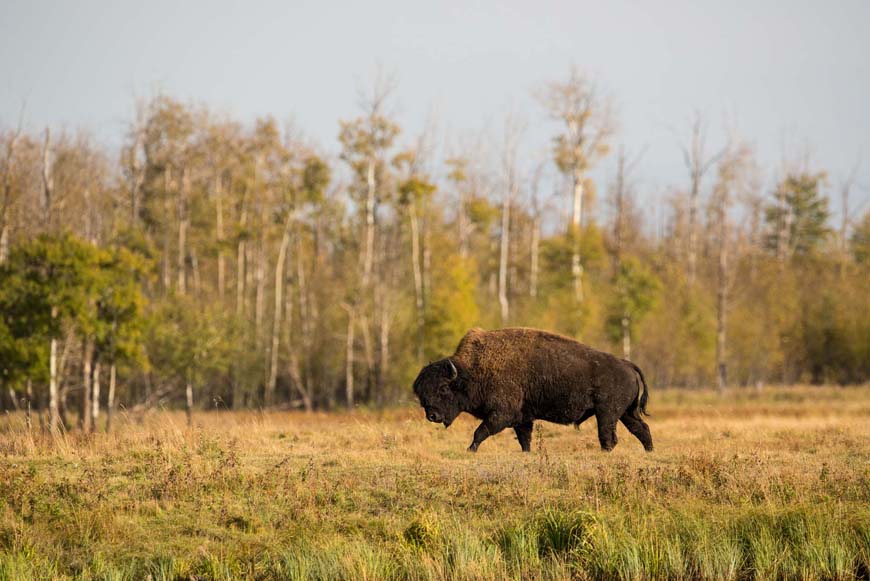
The Long Road to Health: Maintaining Healthy Herds
Early bison conservation efforts during the first half of the 20th century were plagued with the discovery of three diseases in major conservation herds: bovine brucellosis (Brucella abortus), bovine
tuberculosis (Mycobacterium bovis), and anthrax (Bacillus anthracis). These diseases caused major set-backs and added new challenges to the management of bison herds across North America. Although both brucellosis and tuberculosis are not necessarily fatal the way that exposure to anthrax is, over time the overall impact on a herd is detrimental. While there are still wood bison in Canada that continue to be affected by these diseases, healthy conservation herds such as those at Elk Island National Park are available as seed stock for bison projects all over North America.
It is difficult to trace the exact origins of either bovine brucellosis or tuberculosis because both can harbour within an animal undetected for many years, even decades, and symptoms of the illness may only manifest when the animal is under stress or old.Endnote 110 Since these diseases can infect a wide range of animals, including domestic cattle, bison, elk and deer, bison could have been infected from a different species.Endnote 111 Bovine tuberculosis, bovine brucellosis, and anthrax all likely arrived in North America from Europe through livestock brought over by settlers.Endnote 112 Most of the conservation herds today originated with captured calves which were fed with milk straight from domestic cows, which could have been a source of disease, though if any of these bison showed signs of disease before they were sent to national parks it has not appeared in the historical record.Endnote 113 Bovine tuberculosis was first found in bison in 1910 in the Canadian Parks system, and in 1917 brucellosis was found at Yellowstone National Park.Endnote 114
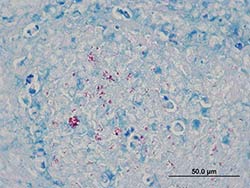
Image courtesy of Todd Shury, Wildlife Health Specialist for Parks Canada.
Bovine brucellosis is a bacterial infection whose symptoms include reduced milk production, swollen joints, and infertility.Endnote 115 A less common effect is the abortion of a fetus, which gives the bacteria its Latin name: Brucella abortus. This effect is particularly concerning because it can result in the significant reduction of a herd’s reproductive ability. An aborted fetus can easily contaminate another bison that examines it out of curiosity, or grazes upon the surrounding contaminated forage.Endnote 116 The more common mode of disease transmission occurs when an infected cow nurses her calf, as one of brucellosis’ reproductive strategies is to harbor itself inside mammary tissue.Endnote 117 Brucellosis was of primary concern at Elk Island National Park, though it has also been found in Wood Buffalo National Park and Yellowstone National Park.Endnote 118 The first plains bison at Elk Island that tested positive for brucellosis was in the winter of 1947. In the three decades that followed, an intensive disease management program resulted in the complete elimination of the disease. Since 1972, Elk Island’s plains and wood bison herds have been considered disease-free. Elk Island continues to maintain this disease-free status in order to help the recovery of bison beyond the borders of the park.Endnote 119
Bovine tuberculosis is a respiratory disease and is characterized by lesions on the lungs. Other symptoms include weakness, coughing, fever, and emaciation. It is usually transmitted by air through the respiratory tract, which makes it easily infectious. Tuberculosis can chronically debilitate a bison over its entire life. Tuberculosis was present in the plains bison at Buffalo National Park, and those bison certainly introduced the disease to Wood Buffalo National Park after 1925.Endnote 120 Currently, approximately 50% of bison in Wood Buffalo National Park are infected with bovine tuberculosis, but no other herds nationally have such high rate of infection.Endnote 121
Anthrax is a bacterial disease that causes sudden death due to septicaemia, or blood poisoning. Often infected animals die within days or even hours of exposure. Anthrax spores can live for decades in the soil and can reoccur sporadically in animal populations many years after the last outbreak. Wallowing bison stir up the soil and can inhale the spores.Endnote 122 The first severe outbreak of anthrax in bison was in the 1960s. Between 1962 and 1971, over 2,800 bison deaths in Wood Buffalo National Park, the Slave River Lowlands, and the Mackenzie Bison Sanctuary were attributed to anthrax. Wild bison cannot be treated for anthrax, but captive bison can be given vaccinations or antibiotics.Endnote 123 Thousands of bison were rounded up in Wood Buffalo National Park between 1965 and 1977 and were vaccinated, though the program may have only been partially successful.Endnote 124 Despite hopeful signs, there is still no assurance that any of these efforts worked because the disease can be harboured in the soil for years. Ther e is still a significant risk of an outbreak of anthrax in some areas, as recent anthrax deaths in the Syncrude display herd of bison in the summer of 2015 have demonstrated.Endnote 125
Top of pageBison At Risk
Bison populations are certainly more abundant today than in their lows of the 1890s, but they are still inherently vulnerable to disease and other calamities. The twentieth century has seen many intensive disease management programs in various bison herds throughout North America, but despite some successes, disease control is still of great concern and the herds require some human intervention. Nine wood bison conservation herds are considered free of disease, but these disease-free bison are outnumbered by the large populations of bison in Wood Buffalo National Park and the Slave River Lowlands which have been infected with bovine brucellosis and tuberculosis.Endnote 126 While a herd of several thousand animals may look secure, unforeseen circumstances can decrease bison numbers at an alarmingly rapid pace. For example, in past decades at Wood Buffalo National Park, there have been instances of thousands of bison dying in a single year due to mass drownings during heavy spring flooding.Endnote 127 In theory, a simultaneous outbreak of anthrax could have all but completely decimated Wood Buffalo National Park’s population. Hot, dry summers – conditions that are recently projected to be even more common in the north in the future due to climate change – increase the possibility of an anthrax outbreak and therefore make a sudden decline in bison numbers due to multiple factors even more likely.Endnote 128 Bison herds free of anthrax, brucellosis and tuberculosis need to be kept by Parks Canada as a safeguard against the catastrophic decline of other bison populations. By having multiple healthy bison herds in many different locations, the larger metapopulation of bison in North America is kept safe overall should disaster occur in a few of its herds.
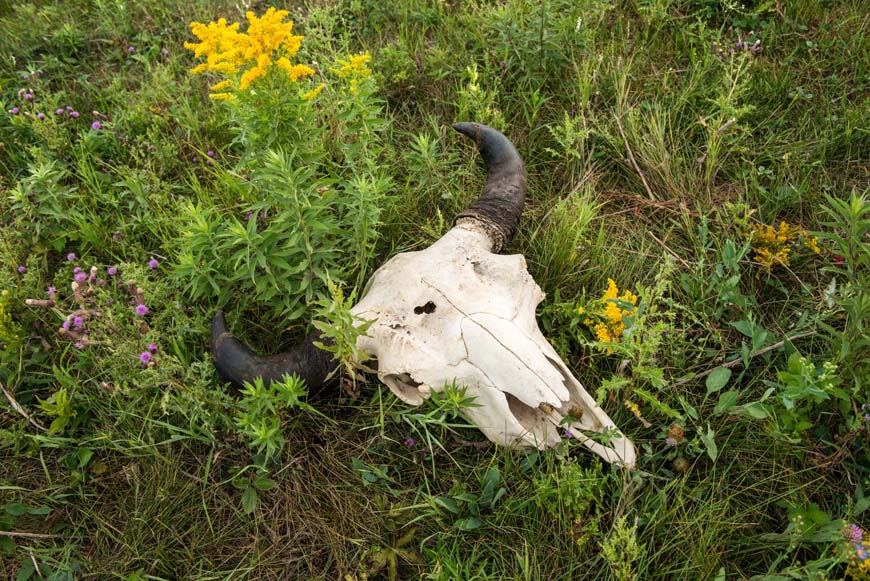
Go Forth and Flourish: Bison Transfers From Elk Island National Park
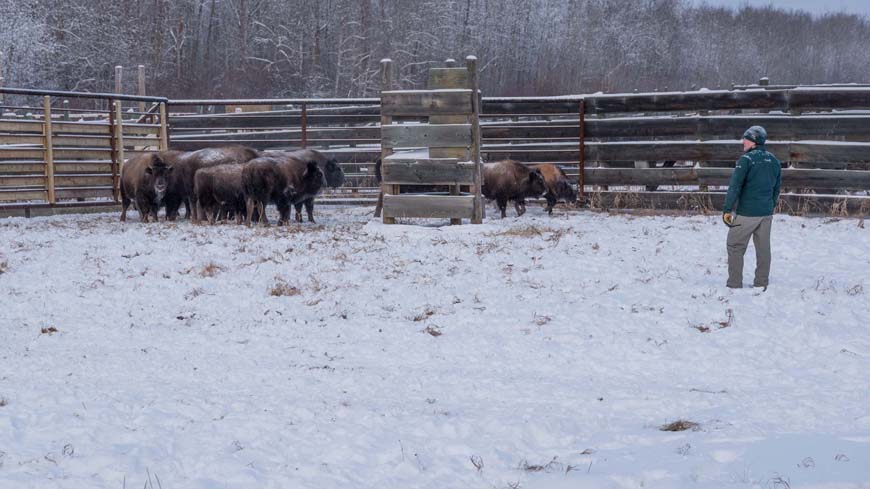
Parks Canada has a long history of moving bison between national parks to increase the number of bison herds and to increase their genetic diversity. In the early years, for instance, bison from Banff were sent to Elk Island National Park and Buffalo National Park, which in turn sent bison in turn to Riding Mountain National Park.Endnote 129As early as 1943, conservation of the plains bison was recognized as an event of national historic significance by the Historic Sites and Monuments Board of Canada. The plaque commemorating the event is located at Elk Island National Park – with good reason, as Elk Island has played a key role in establishing and supporting bison conservation projects across the agency and the continent.Endnote 130
Elk Island National Park has been home to the seed herds for both sub-species of bison in North America for generations and many bison herds today have stock whose ancestors passed through Elk Island. Over the past century, Elk Island has transferred over 2500 plains and wood bison to other conservation sites. Elk Island began live donations of bison early in its history for the purpose of creating display herds in various national parks, zoos, wildlife preserves, and public lands, but the majority of the transfers occurred after the herds were declared disease-free in 1972. Many plains bison in Canada can trace their origins to the plains bison herd at Elk Island and the wood bison herd there has directly or indirectly been the source stock for all wood bison herds in the world with the exception of the populations at Wood Buffalo National Park, the Slave River Lowlands, and the Mackenzie Bison Sanctuary.Endnote 131
As an entirely fenced national park, Elk Island has to maintain its populations below the park’s carrying capacity. Surplus animals are sent preferentially to conservation projects but also to auction to enter the ranching industry as a second alternative.Endnote 132 Maintaining a disease free and genetically viable herd has made Elk Island the choice seed stock for live transfers of bison across North America and around the world. Many of the other conservation and display herds of bison managed by Parks Canada have their origins with Elk Island stock.Endnote 133 Elk Island was the source stock for the plains bison reintroduced to Banff in 2017, and in April 2016 sent 87 calves to the Blackfeet Indian Reservation in Montana as a part of the Iinii (Buffalo) Initiative.Endnote 134
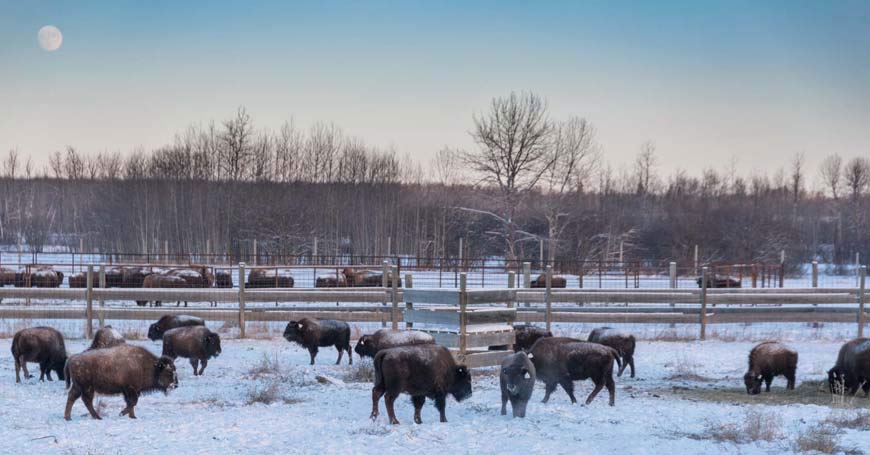
Roaming Far: National Parks and Historic Sites and Reintroduced Bison
By the 1870s, the last great bison herds had been effectively extinguished from Canada’s western territories.Endnote 135 Many national parks within the historic range of bison were founded generations after the last bison was recorded there, though in the past these animals may have been major actors upon the local landscape.Endnote 136 The Canadian government maintains many conservation herds of bison. Conservation herds are defined as herds of bison that are managed by provincial, state, or federal governments and non-governmental organizations whose primary purpose is nature conservation.Endnote 137 These herds range in size from the several thousand found in Wood Buffalo National Park to the small display herds of only a dozen or so bison that are found all across the Parks Canada Agency. Visitors form a more meaningful and emotional connection with animals that they can see in person. These herds serve a key role in educating and inspiring visitors. Some of these bison herds may be small, but all have a role to play in inspiring advocacy and in creating a larger metapopulation of bison.
Riding Mountain National Park is one of the few Canadian parks that received their herd of initial plains bison not from Elk Island, but from the now-defunct Buffalo National Park, though since that time it has received additional stock from Elk Island. The initial bison from Buffalo National Park were chosen because they had plenty to send but also because it was easy to send bison east to Riding Mountain via the train lines. Riding Mountain received its bison in 1931.Endnote 138 The very popular display herd in Banff served as inspiration for the size and style of management of the Riding Mountain herd. The initial herd of 20 bison at Riding Mountain was kept in a fenced paddock, whose location was selected because it was a good jaunt by car from the town of Wasagaming.Endnote 139 Today, the park maintains a display herd of about 30 bison.Endnote 140
Prince Albert National Park was founded in the midst of the debates surrounding the overpopulation problems at Buffalo National Park. The initial proposals for a national park near the city of Prince Albert in 1921 and 1926 both spoke of the potential for another “buffalo park,” but these applications were initially turned down by administrators in Ottawa. The park was founded in 1927 instead as a “scenic and recreation park,” not an “animal park” like Wood Buffalo National Park or Elk Island National Park.Endnote 141 However, Prince Albert was an early recipient of Elk Island’s plains bison, with five being sent to the park in 1936.Endnote 142 This display herd was maintained in a paddock for more than fifty years and was a popular visitor attraction. Endnote 143 The paddock was removed in 1996. The decision was made under the argument that the herd’s value to visitor experience did not outweigh the cost of managing this captive display herd, particularly as there were other free-roaming bison nearby. The remaining animals from the paddock were sold at auction and given to First Nations communities.Endnote 144These bison, however, were not the only ones to find a home in Prince Albert National Park.
The Sturgeon River Bison Herd is a free-ranging herd of plains bison who use parts of Prince Albert National Park for habitat. The herd originated from individuals from Elk Island who were released to the Thunder Hills region of Northern Saskatchewan in 1969.Endnote 145 Upon their release, the group of fifty bison fragmented and scattered. One bull made it almost the entire way back to Elk Island, and was shot only 10 miles east of the park boundary.Endnote 146 A small group of 10 or 15 bison were spotted months later swimming across Crean Lake in Prince Albert National Park, and after several years they seemed to have become resident in the southwest corner of the park and its surrounding area.Endnote 147 The Sturgeon River Plains Bison are known as the first free-roaming herd of plains bison in Canada since the precipitous decline of bison populations in the nineteenth century.Endnote 148Their population peaked at 400 individuals but has declined to less than 250 by 2012.Endnote 149 This herd is cooperatively managed by Parks Canada, the province of Saskatchewan, and by the Sturgeon River Plains Bison Stewards.Endnote 150
While Waterton Lakes National Park is a mountain park, foothills parkland represents prime bison habitat with its rolling grasslands, and bison bones are extremely common finds in archaeological digs in the area. In 1919, park managers considered reintroducing bison to Waterton Lakes as a potential way to alleviate the overpopulation problems in Buffalo National Park, but at the time domestic cattle and horses were grazed in the park and so the plan was abandoned. The economic depression of the 1930s forestalled any further plans to reintroduce bison onto this landscape until after the Second World War. Plains bison were finally reintroduced into Waterton Lakes in 1952 using source stock from Elk Island. These first seven bison were placed in a paddock to prevent them from dispersing onto surrounding ranch land. Since then, Waterton Lakes has maintained a fenced display herd of ten to thirty bison, preventing inbreeding by importing small numbers of bison periodically from Elk Island. While there have been continuous suggestions of a free-ranging or semi-free ranging plains bison herd for over fifty years, current studies suggest that it would not be feasible. These bison are moved between a summer paddock and a winter paddock to ensure that they have enough grazing material; this movement in fact mimics the historical migratory grazing habits of these animals.Endnote 151
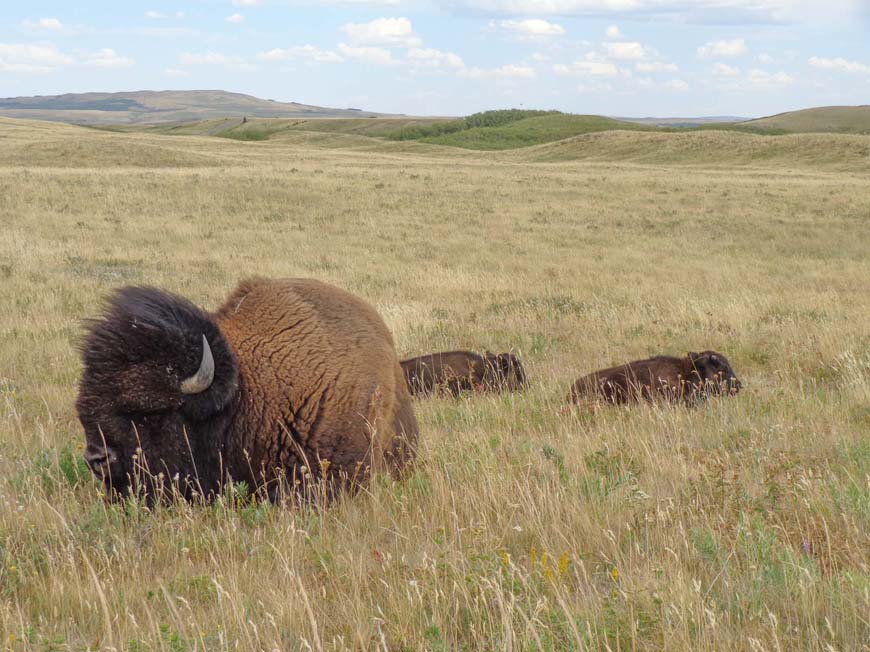
Rocky Mountain House National Historic Site is the only National Historic Site that maintains a herd of bison. They maintained a small herd in a paddock until February 2005, when a redevelopment project necessitated their removal. In December 2006, nine pregnant bison and one bull bison were sent to this historic site from Elk Island National Park, forming the basis of the current herd found there.Endnote 152
Grasslands National Park only recently reintroduced bison onto their landscape with an initial shipment of 71 bison calves and yearlings from Elk Island National Park in 2005, after an absence of over 120 years. They were kept at first in a small paddock over their first winter before being released into a section of the park’s West Block.Endnote 153 As of 2017, there were about 440 bison living in Grasslands National Park.Endnote 154
Establishing new bison conservation herds with adult individuals has often proved tricky, as the bison do not always stay in the release area and, indeed, often wander far. For instance, Elk Island National Park sent 28 adult wood bison to Jasper National Park in 1978, only for the relocated bison to wander out of the park. All but a handful of these wood bison were eventually recaptured and returned to Elk Island.Endnote 155 In the 1980s, relocation programs experimented with the idea of keeping transferred bison in fenced areas for years in the hopes that their progeny, once released, would stay nearby instead of wandering afield.Endnote 156 Such was the case with the Hay Zama herd in northwestern Alberta. Now free-roaming, it originated with the escape of 48 wood bison when a section of their enclosure’s fence collapsed.Endnote 157 Parks Canada employees have been continuously learning from past experience with bison transfers, adapting protocols and handling facilities to better manage these conservation herds.Endnote 158
Parks Canada’s bison have also gone on to support conservation projects internationally. In 2006 thirty of Elk Island’s wood bison were flown across the Bering Straight to Lenskie Stolby Nature Park in Eastern Russia, just south of the Arctic Circle. Thirty more were sent to Russia in 2011 and again in 2013.Endnote 159 In 2009, some of the descendants of the Pablo-Allard herd from Elk Island were sent full circle back to Montana, almost exactly a century after they were shipped to Canada. This time, they were going to support the American Prairie Reserve, a private initiative that aims to rewild native prairie grassland by stitching together existing nature preserves with leased or purchased private ranch land. The reserve’s management wants to re-establish a free ranging wild population of bison with natural migration patterns and aspire to maintaining a herd of 10,000 bison. The original American Prairie Reserve stock came from Wind Cave National Park, South Dakota, whose ancestors came from the New York Zoo. However, since 2010, Elk Island has shipped over 200 bison to the American Prairie Reserve in three separate transfers. Elk Island’s bison are helping to make that dream of wild bison back on the prairie landscape a reality.Endnote 160
In 2016, Elk Island National Park sent 87 plains bison calves to Montana in the care of the Blackfeet Indian Nation. This transfer is a result of the Iinii Initiative and the signing of the Buffalo Treaty, in which a number of First Nations, north and south of the border, are working to restore bison to traditional Indigenous territories for conservation and cultural reasons.Endnote 161 Leroy Little Bear has spoken of the important connections between “iinii” (the buffalo) and Indigenous peoples and how the furthering of this treaty will foster:
Connectedness through strengthening cultural, spiritual, ecological connections with the land and wildlife, and the importance of connecting youth to nature; Healing and nurturing the health of our land; Healing the people by returning the bison as a nutritious food source to improve health, integrating the bison in the spiritual and cultural lives of the Blackfeet people and healthy lands in general lead to healthy people.Endnote 162
The bison are vitally important to this landscape and the peoples who live here.
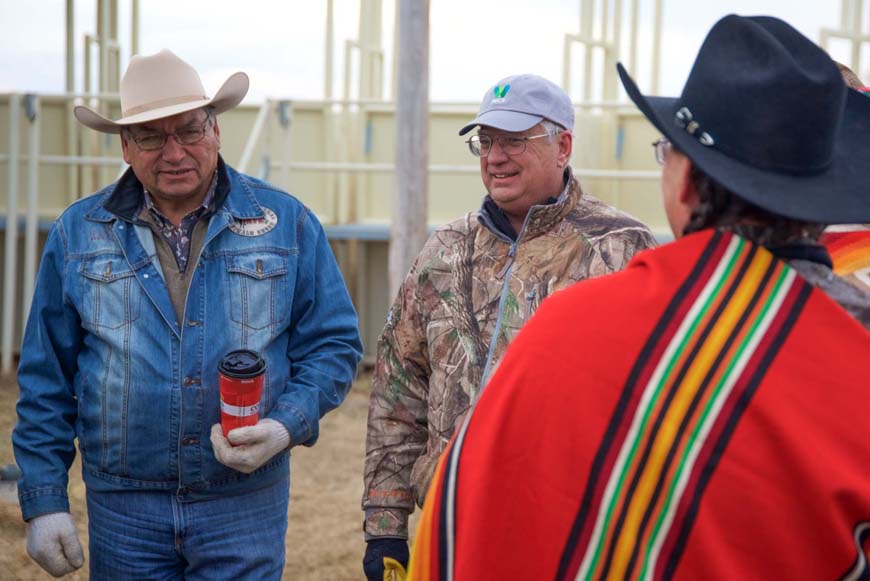
Scott Mair / © Parks Canada
Conclusion
Bison populations have come a long way from their historic lows in 1890. There are over 70 conservation herds of bison in North America today, divided into approximately 11 wood bison herds and 61 plains bison herds, for a total of roughly 30,000 protected wild bison. Including ranched bison, 430,000 bison was the estimated world population of bison in 2010. However, researchers caution that this population number may give the misleading impression that bison as a species is safe from extinction. Many of these bison are not found in conservation herds, but in private hands, where there is economic pressure to make wild bison more docile or to increase their bulk to produce more meat for sale. Bison herds remain isolated from each other and bison remain reliant upon human beings to move between most sub-populations.Endnote 163 The bison populations are still vulnerable and largely isolated from each other. Parks Canada must transfer bison between each population continuously so a large genetic pool, with natural selection forces, can be maintained. From their experience as farmers and ranchers, those who managed the bison populations in Banff and Buffalo National Park in the first decades of the 20th century intuitively knew that bison herds should not remain isolated but should have injections of new stock to maintain the diversity of both populations. Parks Canada must continue to maintain this tradition of a large, healthy metapopulation of bison to help ensure the continued existence of bison into the future. Conservation work still needs to be done to ensure the continued survival of bison as a species.
Parks Canada has played a pivotal role in bison conservation for over a century. When Michel Pablo could no longer maintain his bison in Montana, it was the Canadian government that stepped up to purchase and protect the largest remaining herd of plains bison on the continent. Banff National Park maintained a herd of bison for an entire century, educating visitors and inspiring awe and appreciation. Bison in their thousands still roam in Wood Buffalo National Park, one of the largest protected areas in the world. Elk Island National Park supports new and existing conservation herds with bison of both North American subspecies. Many other Parks Canada sites continue to protect and manage bison. Both larger populations as well as smaller display herds help preserve bison as a whole from the effects of natural disasters and disease and also promote a varied genetic stock.Endnote 164 Bison are now playing key roles in ecosystems across Canada throughout many national parks. Their very presence has a cascade of positive impacts on the plants and animals around them. Bison herds of all sizes instill awe in park visitors and these connections bring visitors closer to this truly Canadian conservation story. Generations of work have secured the place of bison in North America, ensuring they have the opportunity to continue to be on the landscape for centuries to come.
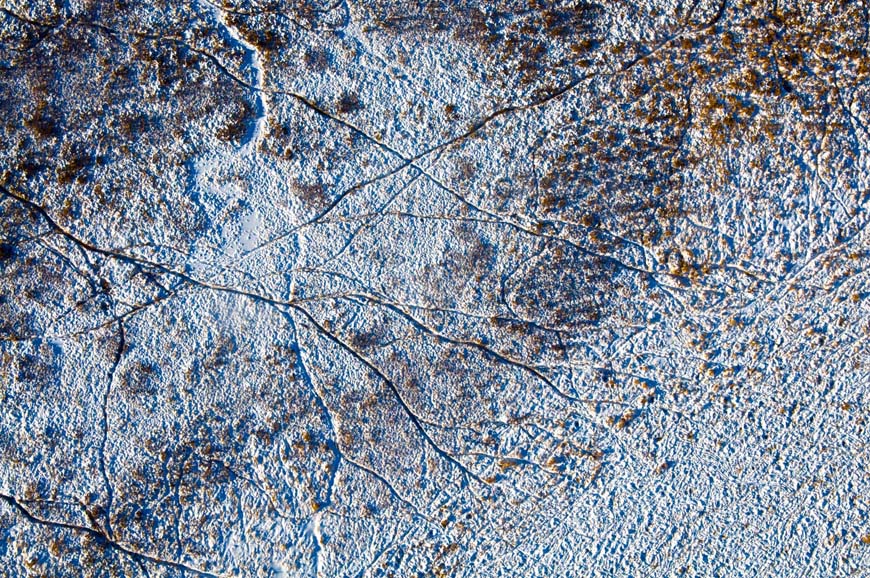
Scott Mair / © Parks Canada
Bibliography
Primary Sources
Benham, D.J. “The Round Up of The Second Herd of Pablo’s Buffalo.” The Edmonton Bulletin. November 8, 1907: 9 – 11. http://peel.library.ualberta.ca/newspapers/EDB/1907/11/08/9/Ar00902.html
“Bison Patriarch at Banff Park is Dead.” The Edmonton Bulletin. April 29, 1909: 3. http://peel.library.ualberta.ca/newspapers/EDB/1909/04/29/3/Ar00302.html
“Buffalo Almost Exterminated By Indians and Early Settlers Now Multiply Rapidly at Wainwright.” The Edmonton Bulletin. June 26, 1920: 18. http://peel.library.ualberta.ca/newspapers/EDB/1920/06/26/18/Ar01802.html
Jones, Tom (engraver and printer). The Last of the Buffalo: Comprising A History of the Buffalo Herd of the Flathead Reservation and an Account of the Great Round Up With Illustrations. Cincinnati: Publisher Scenic Souvenirs, 1909.
Pablo, Marcia L. “Michel Pablo and the Buffalo.” Speech delivered at the American Prairie Reserve, January 7, 2012. Subscriber. “The Last Stand of the Prairie Monarch.” Fort Saskatchewan Reporter. Vol. V, No. VI, Thursday, June 6th, 1907: 1, 8.
“The Bison in Canada.” Science – New Supplement Vol. 61, No. 1583 (May 1, 1925): xiv.
“The Buffalo at Elk Park: The One Place in the World Where a Herd of 400 of These Monarchs of the Plains May Be Seen.” The Edmonton Bulletin. August 29, 1908, 3: http://peel.library.ualberta.ca/newspapers/EDB/1908/08/29/3/Ar00302.html
“Will Corral Buffalo – Story of ‘Round-Up.’” Wainwright Star. January 8, 1909: 1. http://peel.library.ualberta.ca/newspapers/WWS/1909/01/08/1/Ar00104.html
Secondary Sources
Austin, Damien, and Kyran Kunkel. “American Prairie Reserve Bison Report 2015.” American Prairie Reserve Website: http://www.americanprairie.org/wp-content/uploads/2015-APR-Bison-Report.pdf
Banff National Park. “Plains Bison Reintroduction in Banff National Park”: http://www.pc.gc.ca/eng/pn-np/ab/banff/plan/gestionmanagement/bison.aspx
“Bison to be reintroduced to Banff National Park.” CBC News (6 March, 2015): www.cbc.ca/news/canada/calgary/bison-to-bereintroduced-to-banff-national-park-1.2985230
Blyth, C.B. and R.J. Hudson. “A Plan for the Management of Vegetation and Ungulates: Elk Island National Park.” Unpublished internal document, 1987.
Brink, Jack. Imagining Head-Smashed-In: Aboriginal Buffalo Hunting on the Northern Plains. Edmonton: Athabasca University Press, 2009.
Brower, Jennifer. Lost Tracks: Buffalo National Park, 1909-1939. Edmonton: Athabasca University Press, 2008.
Bullchild, Percy. The Sun Came Down: The History of the World as My Blackfeet Elders Told It. Lincoln: University of Nebraska Press,1985; 2005.
Carbyn, Lu. The Buffalo Wolf: Predators, Prey, and the Politics of Nature. Washington and London: Smithsonian Books, 2003.
Carbyn, L.N., S.M. Oosenbrug, and D.W. Anions. Wolves, Bison, and the Dynamics Related to the Peace-Athabasca Delta in Canada’s Wood Buffalo National Park. Edmonton: Canadian Circumpolar Research Series No. 4, 1993.
Colpitts, George. Game in the Garden: A Human History of Wildlife in Western Canada to 1940. Vancouver: UBC Press, 2002.
Daley, Jason. “Genetically Pure Bison Will Return to Montana After 100 Years in Exile.” Smithsonian Magazine: www.smithsonianmag.com/ smart-news/genetically-pure-bison-return-montana-after-100-years-exile-180958597/
Daschuk, James. Clearing The Plains: Disease, Politics of Starvation, and the Loss of Aboriginal Life. Regina: University of Regina Press, 2013.
Deloria, Vine. Custer Died For Your Sins: An Indian Manifesto. New York: MacMillan, 1969.
Dunn, Pat. “The Prince Albert National Park Buffalo Paddock 1936-1996.” Unpublished paper for Athabasca University, June 30, 2012.
Elk Island National Park. “Government of Canada to Send Wood Bison To Russian Conservation Project.” http://www.pc.gc.ca/eng/pn-np/ab/elkisland/ne/ne5.aspx
Environment Canada. “Prince Albert National Park Resource Description and Analysis.” Winnipeg, MB: Natural Resource Conservation Section, Environment Canada, Parks, Prairie and Northern Region, 1986.
The Fish and Wildlife Historical Society. Fish, Fur, & feathers: Fish and Wildlife Conservation in Alberta, 1905-2005. Edmonton: The Fish and Wildlife Historical Society and the Federation of Alberta Naturalists, 2005.
Fuller, W.A. “Canada and the ‘Buffalo’, Bison bison: A Tale of Two
Herds.” Canadian Field-Naturalist 116(1): 141-159.
Frandsen, Dan. “Sturgeon River Plains Bison, an Unfinished Story: Early Development and Management Strategies of a Free-Ranging Plains Bison Population.” Presented at the Bison on the Edge Conference, Big River, Saskatchewan, June 8 – 10, 2010.
Gates, C. Cormack, Curtis H. Freese, Peter J.P. Gogan, and Mandy Kotzman (eds. and comps.). American Bison: Status Survey and Conservation Guidelines 2010. Gland, Switzerland: IUCN, 2010.
Hart, E.J. J.B Harkin: Father of Canada’s National Parks. Edmonton: University of Alberta Press, 2010.
Ibrahim, Mariam. “Two more dead bison from Syncrude herd test positive for anthrax,” Edmonton Journal (21 August, 2015): www.edmontonjournal.com/more+dead+bison+from+Syncrude+herd+test+positive+anthrax/11310865/story.htm
Isenberg, Andrew C. The Destruction of the Bison. Cambridge: Cambridge University Press, 2000.
Johnston, Barb. “Assessing the Feasibility of Establishing Semi Free Ranging Bison in Waterton Lakes National Park.” Parks Canada Internal Document: March 2008.
Kaye, Rob. Born to the Wild: Journals of a National Park Warden in the Canadian Rockies. Grey Wolf Books, 2015.
Knapp et al, “The Keystone Role of Bison in North American Tallgrass Prairie,” BioScience Vol.49 No.1 (1999): 39-50.
Kopjar, Nora R. “Alternatives for Bison Management in Banff National Park.” Edmonton: Graduate Thesis, Department of Forest Science, University of Alberta, 1989.
Locke, Harvey, Ed. The Last of the Buffalo Return to the Wild. Banff, AB: Summerthought Publishing, 2016. Loo, Tina. States of Nature: Conserving Canada’s Wildlife in the Twentieth Century. Vancouver: UBC Press, 2006.
Lothian, W.F. A History of Canada’s National Parks. Ottawa: Parks Canada, 1981.
Lott, Dale F. American Bison: A Natural History. Berkley and Los Angeles: University of California Press, 2003.
Lubove, Seth. “Bison-Loving Billionaires Rile Ranchers With Land Grab.” Bloomberg (May 21, 2013): www.bloomberg.com/news/articles/2013-05-22/bison-loving-billionaires-rile-ranchers-withland-grab
MacDonald, Graham A. The Beaver Hills Country: A History of Land and Life. Edmonton: Athabasca University Press, 2010.
MacEwan, Grant. Buffalo: Sacred & Sacrificed. Edmonton: Alberta Sport, Recreation, Parks & Wildlife Foundation, 1995.
McCormack, Patricia. “The Political Economy of Bison Management in Wood Buffalo National Park.” Arctic Vol. 45, no. 4 (December 1992): 367-80.
McKennirey, Michael. The Great Buffalo Saga. National Film Board of Canada, 1985: https://www.nfb.ca/film/great_buffalo_saga
Ogilvie, Sheilagh C. The Park Buffalo. Calgary: National and Provincial Parks Association of Canada, 1979.
Olson, Wes. Portraits of the Bison: An Illustrated Guide to Bison Society: Second Edition. Altona, Manitoba: Friesens, 2012. Parks Canada. “Bison Update Spring 2013: Visitor Information.” Grasslands National Park of Canada Website: http://www.pc.gc.ca/eng/pn-np/sk/grasslands/visit/visit7.aspx
Parks Canada. “Elk Island National Park of Canada Elk and Bison Recovery Programs,” Parks Canada Media Room (Last Modified 1 May, 2015): http://www.pc.gc.ca/APPS/CP-NR/release_e.asp?bgid=833&andor1=bg
Parks Canada. “Parks Canada Media Line, June 13, 2009.” Parks Canada Internal Document.
Parks Canada. “Plains Bison reintroduced to Grasslands National Park of Canada as Part of ‘Prairie Persists’ Initiative.” Parks Canada Media Room (May 24, 2006): http://www.pc.gc.ca/APPS/CP-NR/release_e.asp?id=999&andor1=nr
Parks Canada. “Preservation of the Plains Bison National Historic Event.” Directory of Federal Heritage Designations. http://www.pc.gc.ca/apps/dfhd/page_nhs_eng.aspx?id=1553
Parks Canada. “Sturgeon River Plains Bison Management Plan: March 2013.” Parks Canada (internal document): Prince Albert National Park, 2013.
Savage, Candace. Prairie: A Natural History. Vancouver; Toronto; Berkeley: Greystone Books, 2004, 2011.
Silversides, Brock. Fort de Prairies: The Story of Fort Edmonton. Victoria; Calgary; Vancouver: Heritage House Publishing Ltd., 2005.
Stewart, Chris. “Thunderous roar of the Buffalo to return to Banff National Park.” APTN National News (January 30, 2017): aptnnews.ca/2017/01/30/thunderous-roar-of-the-buffalo-to-return-to-banffnational-park/
“Wild bison could once again roam in Banff,” CBC News (January 25, 2012): www.cbc.ca/news/canada/calgary/wild-bison-could-onceagain-roam-in-banff-1.1175198
Wilson, Garrett. Frontier Farewell: The 1870s and the End of the Old West. Regina, SK: University of Regina Press, 2007; 2014.
Wobeser, Gary. “Bovine tuberculosis in Canadian wildlife: An updated history,” The Canadian Veterinary Journal Vol.50, No.11 (2009): 1169-1176.
Zhao, Feifei. “Historical Overview of Bovine Tuberculosis in the Riding Mountain National Park Ecosystem.” Winnipeg, MB: University of Winnipeg Master’s Thesis, 2006
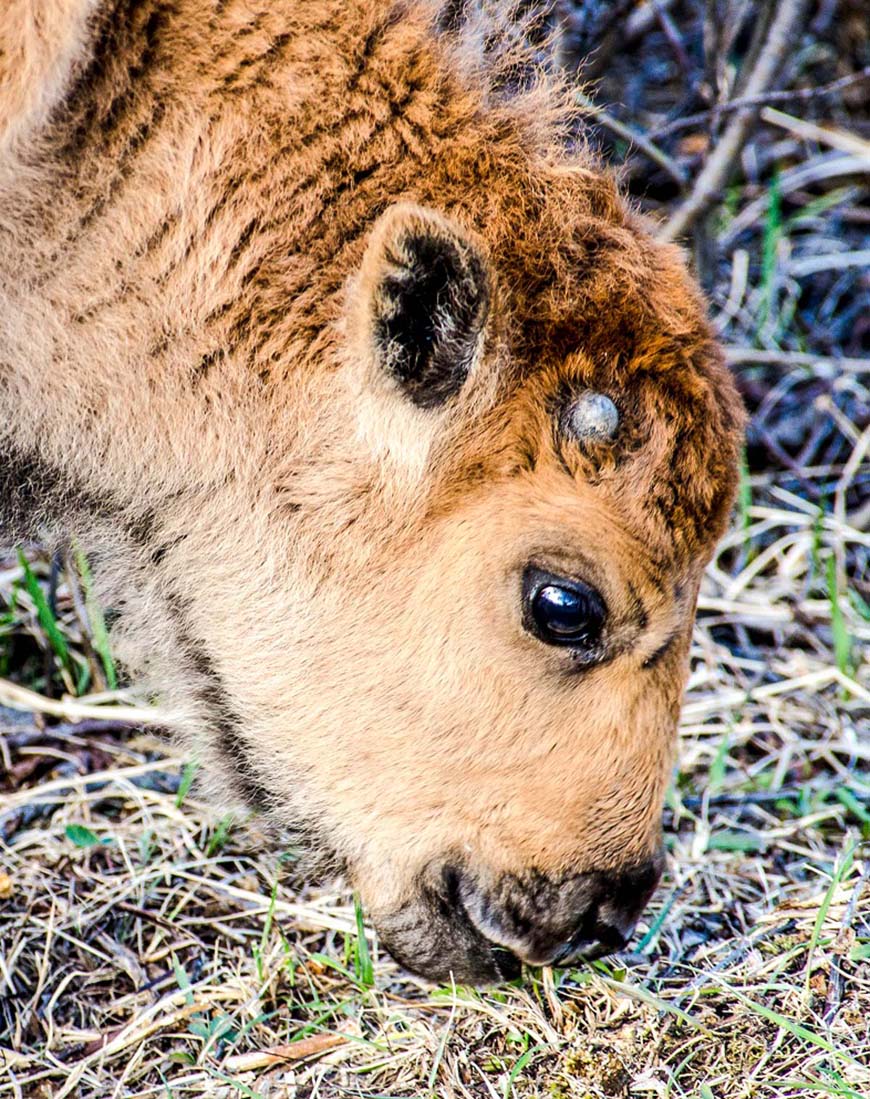
- Date modified :